Crepe Myrtle ( Lagerstroemia) is a small , fast - growing tree for warm, temperate and cool-temperate climate zones. Native to astern Asia, it is regarded as one of the best flowering trees available, and comes in a fantastic range of colours. Masses of flowers with ruffled petals adorn the trees , making an attractive display. The tree also has an attractive trunk with smooth mottled bark. It usually flowers in Mid to late summer and has few pests and diseases, however Powdery Mildew, a fungus affecting the leaves can be a problem in more humid areas. A new variety , called "Indian Summer" has been bred for resistance to the fungus, and also comes in many great colours. Crepe Myrtles do very well in Sydney where the photos were taken. 
![NEW 3 033.JPG]
Authors get paid when people like you upvote their post.
If you enjoyed what you read here, create your account today and start earning FREE STEEM!
If you enjoyed what you read here, create your account today and start earning FREE STEEM!
Myrtle, any of the evergreen shrubs in the genus Myrtus, belonging to the family Myrtaceae. Authorities differ widely over the number of species the genus includes. Most occur in South America; some are found in Australia and New Zealand. True myrtles have a central midrib and a major vein just inside and parallel to the leaf margin.
The aromatic common myrtle (M. communis) is native to the Mediterranean region and the Middle East and is cultivated in southern England and the warmer regions of North America. In Greco-Roman antiquity, the common myrtle was held to be sacred to Venus and was used as an emblem of love in wreaths and other decorations.
The plant may grow more than 5 m (about 16.5 feet) high. The opposite leaves are thick and lustrous, with many small, translucent, oil-bearing glands. The solitary white flowers, about 1.8 cm (about 0.7 inch) long, are borne on short stalks. The fruit is a purplish black, many-seeded berry. Myrtol, a volatile oil found in most parts of the plant, was formerly used as an antiseptic and tonic.
Variegated, yellow-fruited, and white-fruited varieties of the common myrtle are cultivated for ornament. Other plants known as myrtles are wax myrtle, bog myrtle (or sweet gale), crape myrtle, sand myrtle, gum myrtle, downy myrtle, and the mountain laurel of Oregon and California, the wood of which is often sold as “myrtle.” The creeping, or running, myrtle is the periwinkle.
https://www.britannica.com/plant/myrtle
Downvoting a post can decrease pending rewards and make it less visible. Common reasons:
Submit
Congrats, you have shared the Fav, comment Award with one other. Great Pics and good info. Well done !!
Downvoting a post can decrease pending rewards and make it less visible. Common reasons:
Submit
Crepe myrtle trees, in many varieties, overlook an abundance of southern landscapes. Southern gardeners love their crepe myrtles for summer bloom, attractive, peeling bark and limited crepe myrtle care. How to grow crepe myrtle is not an issue in most areas to which they are hardy, USDA Zones 9-7 (with some special varieties surviving in zone 6), as they are easy to grow in the right location.
Crepe myrtle trees should be planted in a sunny location. Soil need not be rich or amended; crepe myrtle trees are adaptable to most soils except those that are soggy. Sunlight and well-draining soil afford a wealth of summer blooms and help keep pests away.
The difficulty most often arises when caring for crepe myrtles. Crepe myrtles trees are sometimes susceptible to sooty mold and powdery mildew, but these are easily cured with an organic spray. The most daunting and incorrectly practiced aspect of crepe myrtle care is pruning” Crepe murder usually occurs when an overly enthusiastic homeowner severely cuts back top branches on crepe myrtle trees, ruining the natural shape and form of the lovely landscape specimen.
source
Downvoting a post can decrease pending rewards and make it less visible. Common reasons:
Submit
Congrats, you are sharing the Fav. comment Award with one other. Great pics and helpful info.
Downvoting a post can decrease pending rewards and make it less visible. Common reasons:
Submit
The colorful, long-lasting blossoms of crape myrtle (Lagerstroemia indica) make it a showpiece in classic Southern gardens. But it is not a particularly delicate plant and it can thrive in conditions that would be a challenge for other plants.
Crepe myrtle are deciduous or evergreen, flowering trees or shrubs and are among the best flowering trees. Crepe myrtle is also known as the crape myrtle, and its scientific name is Lagerstroemia. There are approximately 50 species of crepe myrtle. The crepe myrtle is native to south east Asia and northern parts of Australia and Oceania. The crepe myrtle is part of the Lythracae family, also known as loosestrife.
Crepe myrtle derives its name from the crepe like look and texture of the flowers. Most crepe myrtles shed their bark during the year. Different species of crepe myrtle can be as little as 30 cm (1 foot) in height and can be as tall as 30 m (100 feet). The colour of crepe myrtle flowers come in almost any shade of purple, pink, red or white. Crepe myrtles are popular due to their long lasting flowers, which bloom in Summer and Autumn. It is not attractive to deer, so it is a good choice in areas where damage from browsing animals is a problem.
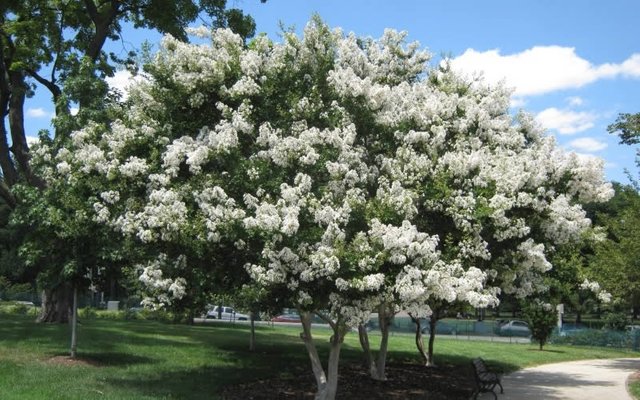
Crape myrtle's long bloom period is one of its most attractive characteristics, and given the proper growing conditions, the plant will be covered with flowers from midsummer into fall.
Downvoting a post can decrease pending rewards and make it less visible. Common reasons:
Submit
You have won the Silly Sausage Award for your comment and it's great pics as well as useful info. Well done !!
Downvoting a post can decrease pending rewards and make it less visible. Common reasons:
Submit
Thank you so much Dear @Ctrl-alt-nwo for selecting my Reply's for the Silly Sausage Award. I am really happy now.
Downvoting a post can decrease pending rewards and make it less visible. Common reasons:
Submit
@ctrl-alt-nwo, That would be excellent gardening explanation. It's really beautiful flowers indeed plants. I added some details from internet.
Crepe myrtle trees, in many varieties, overlook an abundance of southern landscapes. Southern gardeners love their crepe myrtles for summer bloom, attractive, peeling bark and limited crepe myrtle care. How to grow crepe myrtle is not an issue in most areas to which they are hardy, USDA Zones 9-7 (with some special varieties surviving in zone 6), as they are easy to grow in the right location.
The most daunting and incorrectly practiced aspect of crepe myrtle care is pruning” Crepe murder usually occurs when an overly enthusiastic homeowner severely cuts back top branches on crepe myrtle trees, ruining the natural shape and form of the lovely landscape specimen. Caring for crepe myrtle should include limited pruning and little removal of growing branches. Too much pruning from the top sends suckers shooting from the bottom of the tree or the roots, resulting in additional pruning and unnecessary crepe myrtle care. It can also result in an unattractive winter form.
Images found on google
Source: https://www.gardeningknowhow.com/ornamental/trees/crepe-myrtle/crepe-myrtle-care.htm
Downvoting a post can decrease pending rewards and make it less visible. Common reasons:
Submit
Crepe myrtle is a fast-growing deciduous tree or shrub that is particularly popular in the South and Southeast regions and hardy in zones 6 through 10. Due to its multi-stemmed appearance, the tree is commonly grown in yards and public areas for an addition of color and interest. Dwarf crepe myrtle is perfect for containers and as an accent shrub in flower beds.
In Southern climates, the crepe myrtle begins to flower mid-spring, and in northern areas, it blooms in the summer. Flowering in all regions continues until the fall. The flowers grow in 6 to 12-inch long clusters that are 3 to 5 inches wide, and clusters from the dwarf varieties are smaller.
Crepe myrtle trees are available in a range of flower colors, including purple, lavender, white, pink, and red. Some types of crepe myrtle have bicolor flowers. The bark on the plant peels off in the summer, exposing a new layer.
The crepe myrtle enters a dormant state starting in the late fall and lasting throughout the winter. During this time, the leaves fall off, but the roots keep growing.
https://www.doityourself.com/stry/guide-to-planting-crepe-myrtle
Downvoting a post can decrease pending rewards and make it less visible. Common reasons:
Submit
Crape myrtle is an upright deciduous tree or large shrub. Dark green leaves emerge bronze. White, pink, red, or purple flowers appear from summer to autumn. Peeling gray-and-brown bark is attractive.
Noteworthy Characteristics
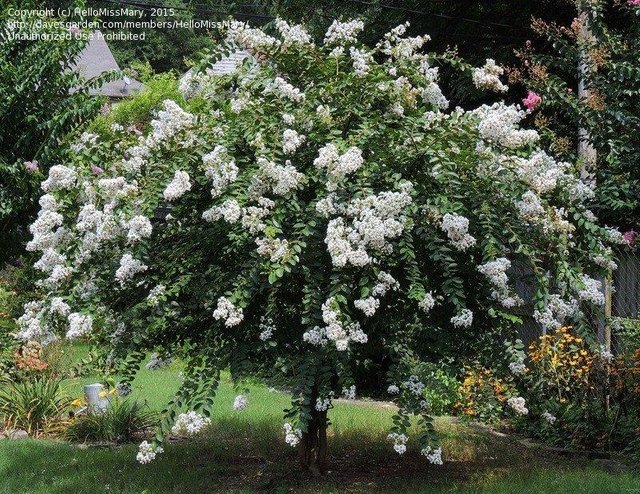
Hybrids of L. indica and L. fauriei vary greatly in size, habit, hardiness, and resistance to powdery mildew.
Care
Thrives in moderately fertile, well-drained soil. Grow against a warm, sunny wall where marginally hardy or overwinter in a greenhouse. Can be hard pruned if renovation is required.
Propagation
Root softwood cuttings in late spring, or semi-ripe cuttings in summer.
Problems
Dieback, powdery mildew, aphids, scale insects, mealybugs, and whiteflies.
Downvoting a post can decrease pending rewards and make it less visible. Common reasons:
Submit
Please quote your sources next time, thanks.
Downvoting a post can decrease pending rewards and make it less visible. Common reasons:
Submit
How to Grow Crepe Myrtle With this video Sir @ctrl-alt-nwo
Lagerstroemia (Crepe Myrtles)
The magnificent Indian Summer Crepe Myrtle (Lagerstroemia) make an ideal choice as a flowering tree in the heat of Australia's mid- to late summer. Available in a multitude of flower colours, from white through to red, and in forms ranging from shrubs to trees, they also feature exfoliating bark that gives them ornamental value even during the dormant winter months.
The Indian Summer Crepe Myrtles are beautifully complimented by their smaller-growing cousins Symphony of Colour Crepe Myrtles by Chopin. Chopins are generally available as shrubs with some of the range being grafted onto 'standards' that are an impressive sight when in full bloom.
White crepe myrtle
Downvoting a post can decrease pending rewards and make it less visible. Common reasons:
Submit
Crape myrtle
Lagerstroemia indica
rape myrtle is an upright deciduous tree or large shrub. Dark green leaves emerge bronze. White, pink, red, or purple flowers appear from summer to autumn. Peeling gray-and-brown bark is attractive.
Noteworthy Characteristics
Hybrids of L. indica and L. fauriei vary greatly in size, habit, hardiness, and resistance to powdery mildew.
Care
Thrives in moderately fertile, well-drained soil. Grow against a warm, sunny wall where marginally hardy or overwinter in a greenhouse. Can be hard pruned if renovation is required.
http://www.finegardening.com/plant/crape-myrtle-lagerstroemia-indica
Downvoting a post can decrease pending rewards and make it less visible. Common reasons:
Submit
Lagerstroemia: Crape Myrtle
Crape myrtles are one of our favorite plants for summer color. Their flowers, in saturated pink, magenta, purple or white, add an unexpected pop of color at a time of year when most shrubs and trees have finished blooming.
Crape myrtles don’t stop with great flowers though; pretty red-tipped summer leaves turn glorious gold, orange, red and purple in autumn before falling off. Great bark completes the ornamental trifecta. The bark on many Crape myrtles peels in puzzle patterns to reveal smooth cinnamon or tan colors that glow during winter, especially when glistening in Portland rain.
Lagerstroemias are available in different mature sizes; some are shrubs, growing between 5-8 feet. Others are larger, growing into lovely trees up to 20-25 feet. Tree types are now included on Portland’s street tree lists, and are an excellent choice for parking strips that are very hot, provided that they are watered weekly.
Crape myrtles are native to areas where summer rain is frequent, often in the form of thunder storms. Portland summers are typically hot and dry, so supplying weekly deep watering is important for good blooming and strong growth. They also love heat. South-facing, blazing sun all day or reflected heat from sidewalks and walls is their ideal site. Surprisingly Crape myrtles thrive in heavy soil, having thick roots that push through clay. They languish in soil that is soggy during wet months and soil that is nutrient rich and amended.
Plants are available in a wide range of mature sizes, from dwarf forms maturing at 3-4’ to trees growing to 20-25’.
Lagerstroemia 'Coral Magic'
Big clusters of coral pink flowers in August, red new leaves turn dusky dark green – red fall color, grows 6-10’ x 6-10’.
Lagerstroemia 'Arapaho'
Grows 18'-20' tall.
Lagerstroemia 'Natchez'
Grows 20'-25' tall.
https://portlandnursery.com/trees/lagerstroemia/
Downvoting a post can decrease pending rewards and make it less visible. Common reasons:
Submit
Crape myrtle is a very beautiful and popular flower. Lagerstroemia is it's scientific name and commonly known as Crape myrtle. Mainly Lagerstroemia is a shurb or small tree.
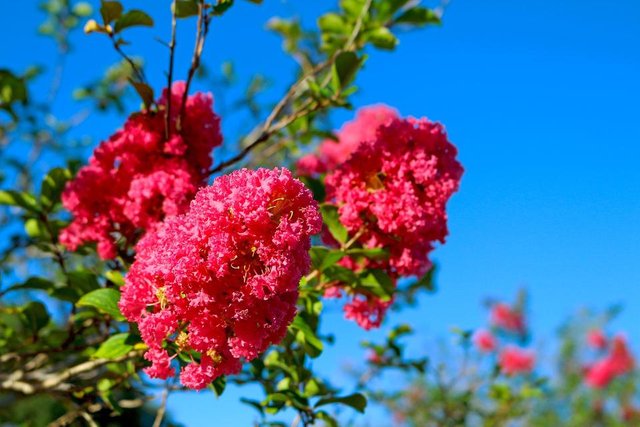
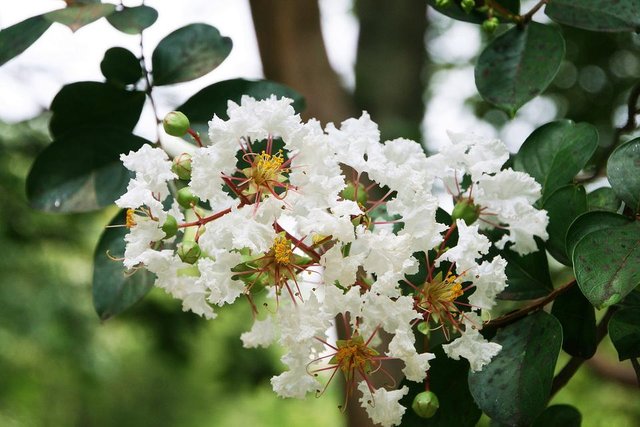
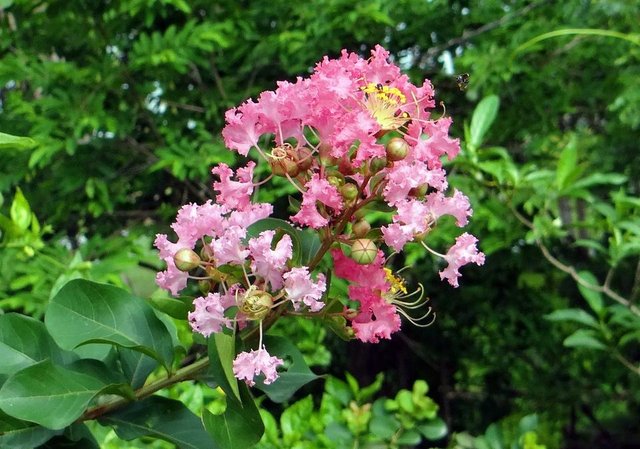
source
The flowers mainly found in southern Asia and Australia. It has many colours like red, pink and white.
source
source
Flowers is the beauty of nature. We can learn from flowers like love, peace, beauty, innocence, purity. We should plant flowers everywhere like home, school, college, office and make the world beautiful and peaceful.
Downvoting a post can decrease pending rewards and make it less visible. Common reasons:
Submit
Crape myrtles are wildly popular in the South for good reason. They bloom in the summer, when there are few other trees and shrubs providing that service. The larger varieties grow rather quickly, providing a bit of shade in addition to the seasonal color.
All crape myrtles are sun lovers, generally cold hardy in zones 7-10, although there are some that will work in zone 6 as well. They are extremely heat-tolerant and quite drought-tolerant once established. Plant them in full sun, amending the soil with soil conditioner to provide a moist and well drained situation.
Care is minimal for crape myrtles. Fertilize in spring with a general purpose shrub fertilizer—cottonseed meal works great—and keep it mulched to maintain consistent soil moisture and temperature. Water periodically during dry spells.
The major problems with crape myrtle include Japanese beetle, aphids, whitefly and powdery mildew. Again, providing a good location and proper sizing to fit the site will minimize most of these problems, but monitor for them and treat as needed.
Crape myrtles, like most other commercially available plants, come in a wide selection of varieties. Not only do they differ in bloom color and cold hardiness, but also in mature size, bloom time and disease/insect resistance.
Downvoting a post can decrease pending rewards and make it less visible. Common reasons:
Submit
From the vibrant hues, clusters of blooms, smoothest bark, and dense foliage this flamboyant tree is sure to be the center of attention in any landscape. Known not only for its beauty, but also for its hardiness and loved dearly for its ability to be planted in unthinkable places, like the side of streets, in medians, and even highways.
For the best results, plant your crape myrtle in an area that gets at least 6 to 8 hours of full sun daily (more sun = more blooms). You can also plant your tree in an area with partial sun, but you may not get as many flowers.
When planting your crape myrtle tree, it is important that you pick a spot that gets at least 6 to 8 hours of full sunlight per day and has well-drained soil.
This is vital because if your soil isn't well drained, it can cause root rot; and if you do not plant it in an area that gets full sun, you will have minimal amounts of blooms. Afterward, dig a hole twice the size of the root ball. Be careful, if you plant the tree too deep in the soil, the tree will not be able to breathe.
Source
Downvoting a post can decrease pending rewards and make it less visible. Common reasons:
Submit
The crepe myrtle is a favorite of many southern gardeners. (Crepe myrtle is the preferred common name in the south). The draw for this plant is that is blooms at a time when most trees are not blooming. If the plant is healthy it will be covered with blooms that will last for months during the hottest part of the summer. This tree is resistant to damage by deer.
Crape myrtle is an upright deciduous tree or large shrub. Dark green leaves emerge bronze. White, pink, red, or purple flowers appear from summer to autumn. Peeling gray-and-brown bark is attractive.
Crepe myrtles will grow in almost any kind of soil sand, loam or clay. It is even possible to grow them in containers if they are watered and fertilized properly. They will grow in partial shade, however, the best flowering will occur on plants that receive more than 6 hours of direct sun. They range from having smooth to exfoliating bark. To promote flower bloom it is best to trim off seed pods.
Thrives in moderately fertile, well-drained soil. Grow against a warm, sunny wall where marginally hardy or overwinter in a greenhouse. Can be hard pruned if renovation is required.
Sources: 1, 2
Downvoting a post can decrease pending rewards and make it less visible. Common reasons:
Submit
Crepe myrtle is one of the shade plants that look beautiful when pink flowering. The Latin name is Lagerstroemia Speciosa, or other name is Crape-myrtle Queen, or Pride of India. Crepe myrtle leaves benefits often used by our parents to treat diabetes and hypertension. Crepe myrtle is a species of Lagerstroemia that thrives in the tropical South Asian region.
Lagerstroemia indica is a deciduous shrub or small tree with an upright, vase-shaped crown; it can grow from 3 - 8 metres tall.
The tree is harvested from the wild for local use as a medicine and source of wood. It is used in soil stabilization projects and is a very ornamental plant, valued especially for its floral display and neat habit, being commonly grown in gardens, as a street tree etc from the warm temperate zone to the tropics - there are many named varieties.
Chemical compounds that have been isolate from leaf extract include corosolic acid, lager-stroemin, flosin B, reginine A, tannin, alkaloids, saponins, terpene, glucose. Characteristic of Crepe myrtle tree can seen from its growth, plant height can reach 45 m.
Generally Crepe myrtle grows between 25 to 30 meters and has many branches. Crepe myrtle stems are pale brown or even turn brownish red, floral features of a panicle and purple.
Source
Downvoting a post can decrease pending rewards and make it less visible. Common reasons:
Submit
This is very beautiful garden and beautiful photography.
thanks @ctrl-alt-nwo
Have a great day.
Downvoting a post can decrease pending rewards and make it less visible. Common reasons:
Submit
Don't forget to quote your source next time, thanks.
Downvoting a post can decrease pending rewards and make it less visible. Common reasons:
Submit
Crepe Myrtle is a deciduous, vase-shaped tree about 6-8m (18-25′) tall. It is often severely pruned and grown as a shrub 3-4m (10-12′) tall. Trusses of white, pink, mauve or purple blooms appear in late summer.
The petals are ruffled, with a crepe-like texture. In autumn the mid-green leaves turn yellow, orange or red (depending on the variety) before falling. Unpruned crepe myrtles develop beautifully coloured, smooth, mottled trunks.
There is an Australian native crepe myrtle (Lagerstroemia archeriana), which grows to around 7m (20′) tall and has pinkish mauve flowers. Crepe myrtles grow well in most parts of Australia. In mountain zones plant in a warm, sheltered microclimate.
The Indian Summer range has been specially bred to resist powdery mildew, a fungal disease that can be seen on some older crepe myrtle varieties. Each cultivar is named after an American Indian tribe, and they range in size from around 3-6m (10-18) fully grown.
Crepe myrtles can be heavily pruned in winter to encourage the development of long, arching branches of flowers. Keep well watered through summer. To reduce the risk of powdery mildew plant in an open, sunny garden situation with good air circulation.
Crepe myrtle plants look outstanding on mass, planted along a fence line or driveway. It makes a perfect edition to backyards as a single specimen plant and is widely used in council strips and common areas.
Source
Thank you @ctrl-alt-nwo for creating such a wonderful blog for learning and growth.
Downvoting a post can decrease pending rewards and make it less visible. Common reasons:
Submit
The South's love affair with crepe myrtles is undeniable. In some areas, you see them on practically every street--and for good reason. Few plants can match their combination of spectacular summer flowers, colorful autumn foliage, and handsome sculptural trunks. If you're thinking of adding one or more crepe myrtles to your landscape this season, the following tips will help you make a good decision.
Seeing a crepe myrtle in its full summer splendor sends some of us running to the garden shop to buy a plant the same color. But don't buy impulsively. Pay attention to the plant's tag. Make sure that it is not only the exact color that you want, but also the right size and look you hope to achieve.
Crepe myrtles range in size from dwarf selections that grow less than 3 feet tall to several that reach upwards of 30 feet. Knowing the mature height of a plant before you buy it and planting the proper size for the site will save you much heartache and backache in the future. If you're in the Upper South, you should also look for selections that are extra cold-hardy.
Info Source
Downvoting a post can decrease pending rewards and make it less visible. Common reasons:
Submit
The crapemyrtle is often referred to as the "lilac of the South." With its striking flowers, handsome bark and attractive foliage, this species is a favorite for landscapes. It can be grown as either a shrub or small tree and is often used in groupings, containers, hedges and screens. You can even find the common crapemyrtle used as small street trees in urban settings.
The long flowering comes as the trademark individual flowers, with their curious crepe paper textured petals, last for weeks. Also, the tree produces flowers over a long period.
As well as being long flowering, crepe myrtles offer a large range of flower colours. Blooms vary from shades of pink, to red, purple, mauve, lilac and white.
source:
http://www.homelife.com.au/gardening/plant-guides/plant-guide-crepe-myrtle
image source : pixabay
Downvoting a post can decrease pending rewards and make it less visible. Common reasons:
Submit
Lagerstroemia indica

Lagerstroemia indica otherwise known as crepe myrtle (or crape myrtle), could be considered something out of the ordinary, and yet it is a magnificent shrub or small tree that has the Award of Garden Merit, and with good reason. At this time of year it is smothered in crinkled, crepey-looking flowers (hence the common name) about 2cm (⅘in) wide individually, held in large groups (panicles). At a distance the effect is a cloud of pink, and close up the ruffled petals are extremely pretty.
But it isn’t only the flowers that make this plant special. It has an open, multi-stemmed habit with beautiful, peeling bark, extending the season of interest and making it even more worthy as a garden plant. Also, its small dark green leaves change to yellow and orange in autumn.
At Wisley we show this plant off in a sheltered location by the old brick arch at the corner of the Laboratory building and the Canal (the arch leads through to the toilets), so it’s easy to find. It thrives with the extra protection the wall gives it over winter. Its great as a single specimen and equally happy in company – we have cultivars in the Mixed Borders (left).
If you have a similar spot then consider Lagerstoemia indica or one of its many cultivars (flowers come in white, pink, crimson or purple), and enjoy this more unusual lovely garden plant.
https://www.rhs.org.uk/gardens/wisley/wisley-blogs/wisley/August-2014/pom-august
Downvoting a post can decrease pending rewards and make it less visible. Common reasons:
Submit
Crape myrtles (Lagerstroemia) offer the powerful triple allure of brilliant flowers (late in the season), beautiful bark, and vivid fall color. Long grown in western Oregon, they are enjoying a surge of discovery among gardeners. Often thought of as trees and shrubs for hotter climates, a wide range of cultivars have proven their adaptability in our milder summers, and others are waiting to be discovered by gardeners.
The cultivars released through this program express a broad variation in habit, size, flower color, bloom time, and bark coloration. From dwarf shrubs, barely eighteen inches tall, to large and spreading shade trees, they constitute some of the most popular selections now grown in the United States. Aside from a handful of cultivars, however, they remain little known in Oregon gardens.
Another important chapter in crape myrtle breeding is the work of Dr Carl Whitcomb, of Lacebark Inc in Stillwater, Oklahoma. In the last twenty-five years, he has raised seedlings from a single vividly flowered specimen of Lagerstroemia indica, with astonishing results. Through a long and rigorous evaluation process, he has been able to select for cold hardiness and disease resistance, like those from the National Arboretum, as well as drought tolerance. His introductions, however, offer more vivid colors, including true red flowers, extended bloom time, and darkly hued foliage—a completely new look for crape myrtle.
Downvoting a post can decrease pending rewards and make it less visible. Common reasons:
Submit
Crape myrtles (Lagerstroemia) offer the powerful triple allure of brilliant flowers (late in the season), beautiful bark, and vivid fall color. Long grown in western Oregon, they are enjoying a surge of discovery among gardeners. Often thought of as trees and shrubs for hotter climates, a wide range of cultivars have proven their adaptability in our milder summers, and others are waiting to be discovered by gardeners.
Crape myrtles flower on wood produced in the current year, so any pruning should be done in early spring. It is best to prune as little as possible. Remove congested wood on the interior of the plant to maintain good air circulation, which helps avoid powdery mildew. Gently shape the remaining branches to enhance their natural character.
As trees mature, removing the lower limbs will reveal the striking bark of the trunks. Pruning will encourage new growth but does little to enhance flowering.
src
Downvoting a post can decrease pending rewards and make it less visible. Common reasons:
Submit
Originating in Eastern Asia, Crepe Myrtle (Lagerstroemia indica) can be found in areas including parts of China, Korea and Japan. Named by the famous botanist and forefather of botanical nomenclature Carl Linnaeus, Lagerstroemia indica was given to him by the merchant Magnus Von Lagerström in the 1700’s.
This small to medium deciduous tree forms a lovely rounded vase shape. In late summer, the Crepe Myrtle bears trusses of very attractive, bee-attracting crepe-like flowers, originally pink but now also available in variations of pinks, whites and mauves.
In recent times, several ranges of new Crepe Myrtles have been developed. The new varieties are more disease-resistant and can be used in even more applications within the landscape. The Indian Summer range includes trees ranging in size from small to medium with weeping and more upright forms available. It also offers a great variety of flower colours, ranging from white to pinks, to lavender and almost reds.
Hardy in most parts of Australia, Crepe Myrtles prefer a full sun position, in a well drained soil. In severe frost areas they may require a sheltered position. Once established they are also quite drought tolerant.
SOURCE
Downvoting a post can decrease pending rewards and make it less visible. Common reasons:
Submit
A interesting and spectacular tree is the Lagerstroemia indica, or crepe myrtle.It flowers from early January through until the end of March.
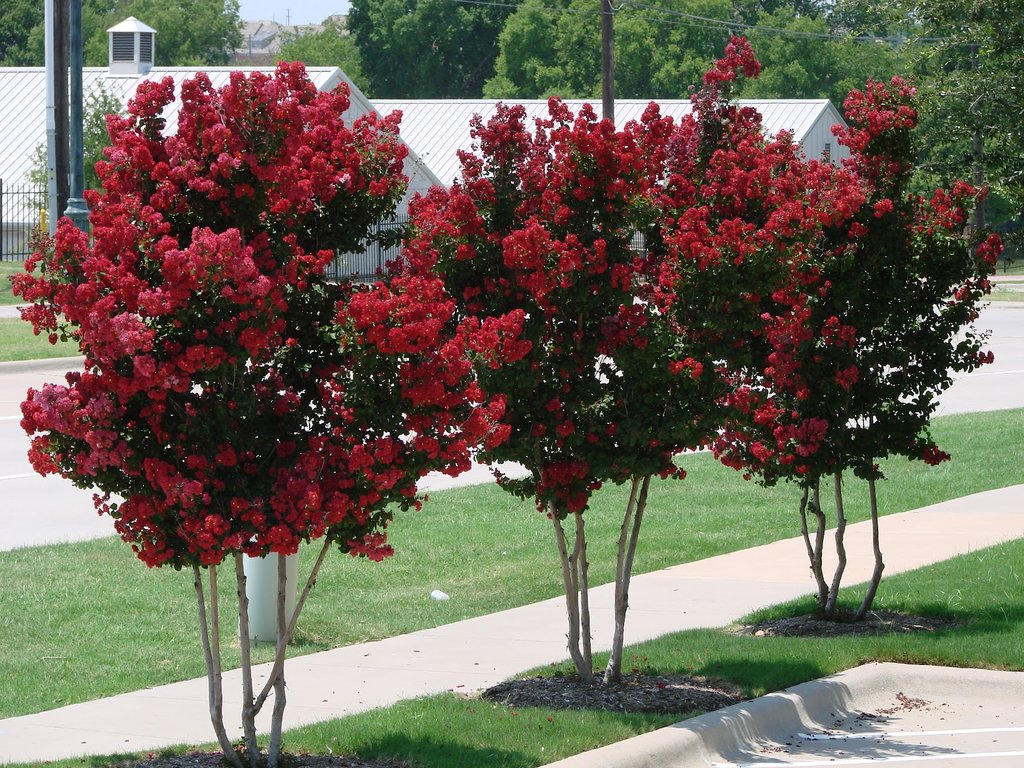
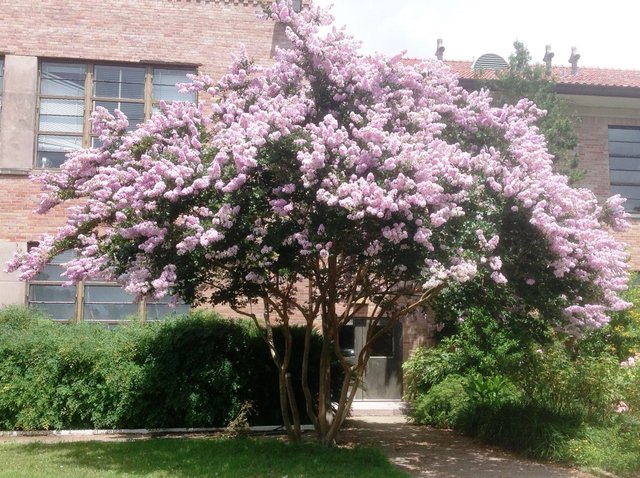
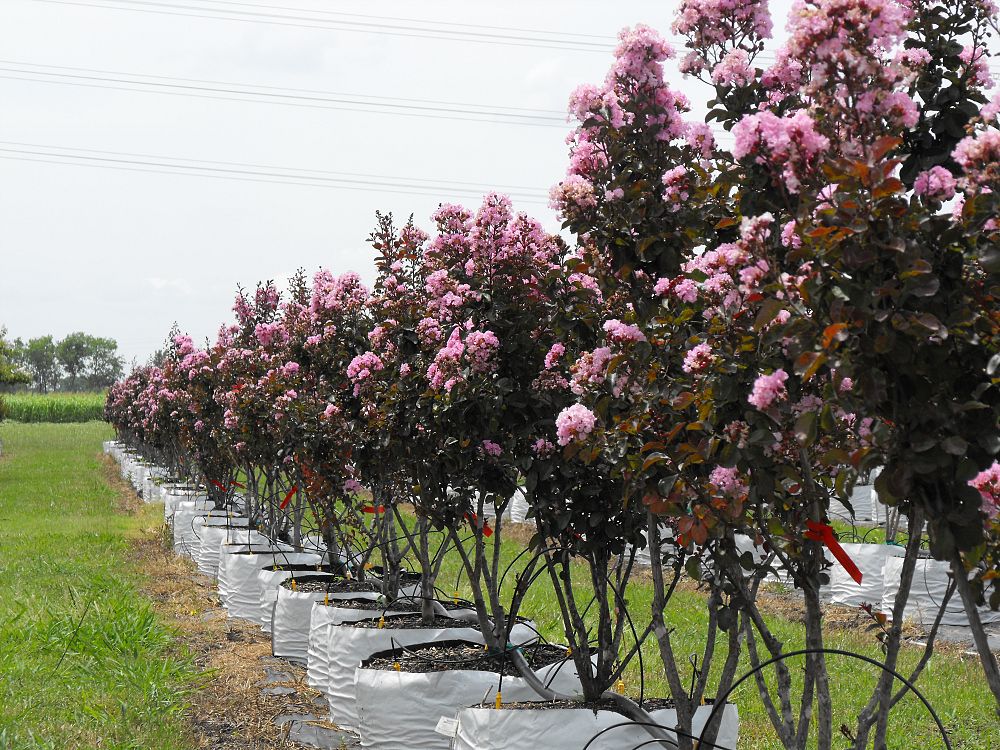
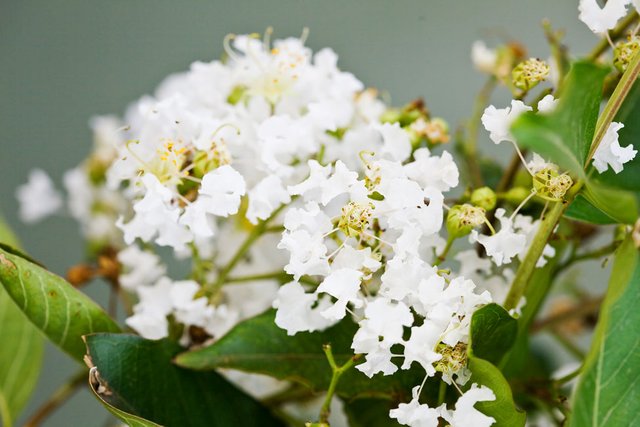

Crepe myrtles are remarkably drought-tolerant.
Pruning a crepe myrtle is really simple. Wait until the flowers have finished and then cut it back at least 30 centimetres.
Crepe myrtles create interest all year and are adaptable to many sized gardens. All varieties provide striking colour in summer, wonderful autumn foliage and in winter have beautiful, ornate bark.
Info source-http://www.abc.net.au/gardening/factsheets/crepe-myrtles/9428614
Downvoting a post can decrease pending rewards and make it less visible. Common reasons:
Submit
Crepe Myrtle Information:
Lythraceae
Deciduous shrubs and trees
US, MS, LS, CS H10–6, except as noted
Full sun
Moderate water
The crepe myrtles are among the most satisfactory of plants for the South: showy summer flowers, attractive bark, and (in many cases) brilliant fall color make them year-round garden performers. Long, cool autumns yield the best leaf display; sudden frosts following warm, humid fall weather often freeze leaves while they’re still green, ruining the show.
Japanese Crepe Myrtle
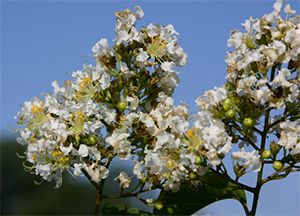
L. fauriei. Native to Japan. Tree to 20–30 ft. tall and wide, with erect habit and outward-arching branches. Light green leaves to 4 in. long and 2 in. wide turn yellow in fall. Especially handsome bark: the smooth gray outer bark flakes away to reveal glossy cinnamon brown bark beneath. Small white flowers are borne in 2- to
4-in.-long clusters in early summer; often blooms again in late summer.
Indica Crepe Myrtle
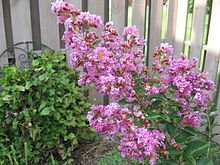
L. indica. The premier summer-flowering tree of the South. Tolerates heat, humidity, drought; does well in most soils as long as they are well drained. May be frozen to the ground in severe winters in the Upper South, but will resprout.
Queen’s Crepe Myrtle
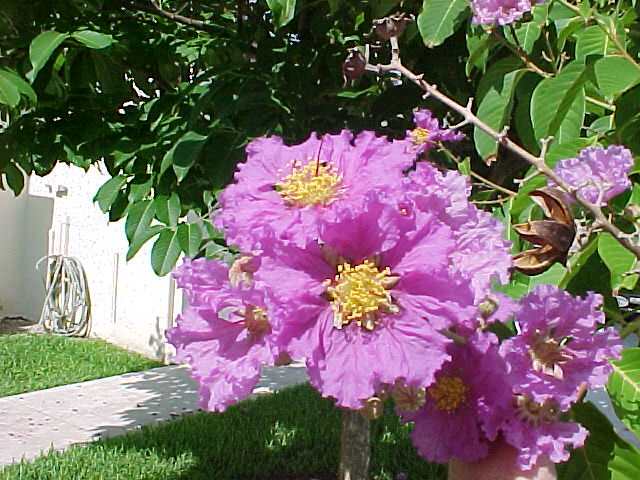
L. speciosa. Zones TS; 12–9. Tree to 25–30 ft. tall, 15–25 ft. wide. The showiest and most tender of the crepe myrtles, displaying huge clusters of white, pink, lavender, or purple flowers in June and July. Individual blossoms reach 3 in. across. Large leaves (8–12 in. long, 4 in. wide) turn red in fall. Smooth, mottled, exfoliating bark. Rank grower; annual pruning in winter is especially important to control size and form.
source
Downvoting a post can decrease pending rewards and make it less visible. Common reasons:
Submit
The Crepe Myrtle trees are superior thanks to mildew resistance. Drought tolerant, Crepe Myrtle craves the heat, and may bloom with large clusters of delicate flowers. When the hot weather arrives, expect late spring and summer colors to decorate your landscape with shades of red, white, purple and pink.
Source
Source
Crepe Myrtle Lagerstroemia is just as colorful in the fall as it is in the summer. Fall colors such as golden, orange and red are sure to complement any yard and landscape. This small-to-medium-sized tree looks amazing in red. However, even if bare, it reveals a handsome outline and smooth, spotted gray to light brown bark that may shed to reveal a pinkish, inner bark.
Source
Source
Crepe Myrtle grows at a slow to moderate rate up to 15-feet high, spreading up to 8 to 12 feet. The plants usually take on a vase shape with shiny, bright green leaves. It is a versatile drought tolerant plant that combines well with other plants in any type of garden, so feel free to plant Crepe Myrtle anywhere on your landscape for instant beauty and appeal.
Source
Some of the best varieties for US area:
Text Source
Downvoting a post can decrease pending rewards and make it less visible. Common reasons:
Submit
Lagerstroemia indica, all the more generally known as the Crepe Myrtle, is blasting into blossom all finished Melbourne. They are a multi-stemmed deciduous tree which develops well in full-sun.
The uncovered trunk is a component in itself, being smooth and having pinkish-dim mottled spots. The mid year/fall
Crepe myrtles have numerous scene applications. Planted together, they make an expansive deciduous fence or screen. A solitary tree can make a particular concentration, and the combine surrounding the front entryway welcomes guests with a warm southern greeting.Be beyond any doubt to choose the correct size for your necessities. Expansive composes require space for development without infringing on structures, electrical cables or ways. The normal size, which will develop from 12 to 15 feet, is perfect for a little patio or garden. The selection of elves looks extraordinary in vast holders, estates of the storm cellar and even incorporated into enduring beds. Likewise, recollect that myrtle-like creams love the sun. The volume of blossom generation is essentially diminished in a light shade, and a full shade can counteract
Downvoting a post can decrease pending rewards and make it less visible. Common reasons:
Submit
Crape myrtle is an upright deciduous tree or large shrub. Dark green leaves emerge bronze. White, pink, red, or purple flowers appear from summer to autumn. Peeling gray-and-brown bark is attractive.
The crepe myrtle is a favorite of many southern gardeners. (Crepe myrtle is the preferred common name in the south). The draw for this plant is that is blooms at a time when most trees are not blooming. If the plant is healthy it will be covered with blooms that will last for months during the hottest part of the summer. This tree is resistant to damage by deer.
Common Name(s): Crape myrtle, Crapemyrtle, Crepe myrtle.
Cultivar(s): Dallas Red (20 ft.) is very cold hardy, Natchez (white, 25 ft.), Muskogee (lavendar), Cherokee (red, 10-12 ft.), Tuscarora (coral pink, 16 ft.), Powhatan (purple, 14-20 ft.).
Flower: Panicle of white, pink, red, purple flowers July to fall on new growth.
Leaf: 1 to 2.8 in. opposite to whorled, simple leaf; yellow, orange, red fall color; white flowered trees produce yellow fall color.
Thrives in moderately fertile, well-drained soil. Grow against a warm, sunny wall where marginally hardy or overwinter in a greenhouse. Can be hard pruned if renovation is required.
Source:https://plants.ces.ncsu.edu/plants/all/lagerstroemia-indica/
Downvoting a post can decrease pending rewards and make it less visible. Common reasons:
Submit
Crepe Myrtles:
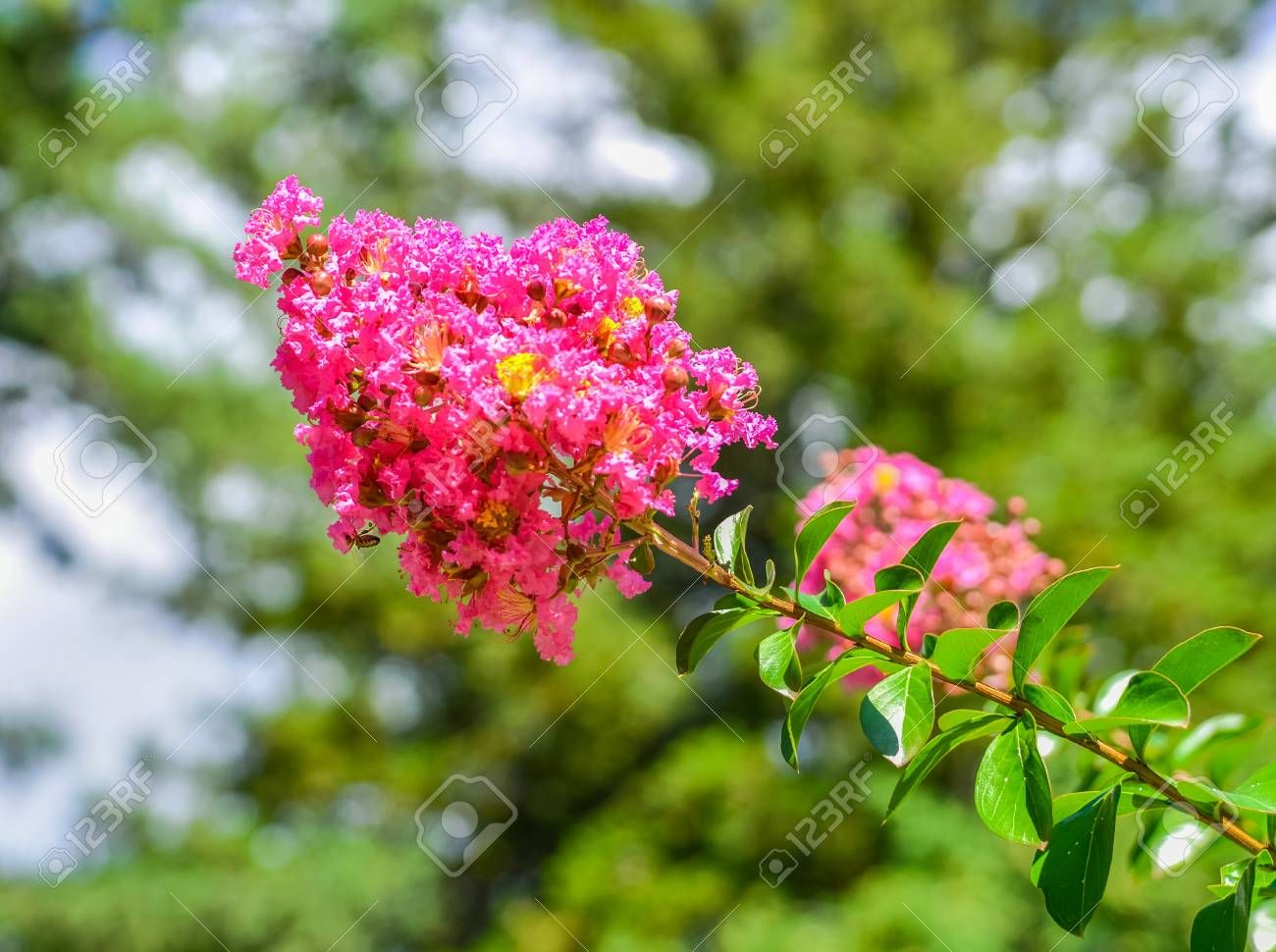
The magnificent Indian Summer® Crepe Myrtle (Lagerstroemia) make an ideal choice as a flowering tree in the heat of Australia's mid- to late summer. Available in a multitude of flower colours, from white through to red, and in forms ranging from shrubs to trees, they also feature exfoliating bark that gives them ornamental value even during the dormant winter months.
The Indian Summer Crepe Myrtles are beautifully complimented by their smaller-growing cousins Symphony of Colour Crepe Myrtles by Chopin. Chopins are generally available as shrubs with some of the range being grafted onto 'standards' that are an impressive sight when in full bloom.
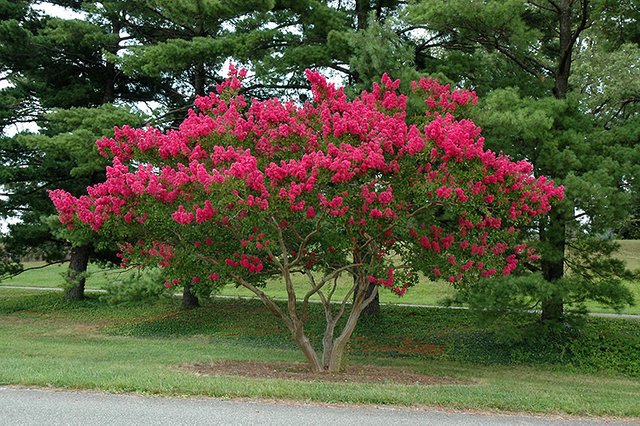
Downvoting a post can decrease pending rewards and make it less visible. Common reasons:
Submit
Crape Myrtle (Lagerstroemia):
The crapemyrtle is often referred to as the "lilac of the South." With its striking flowers, handsome bark and attractive foliage, this species is a favorite for landscapes. It can be grown as either a shrub or small tree and is often used in groupings, containers, hedges and screens. You can even find the common crapemyrtle used as small street trees in urban settings.
Hardiness Zones:-
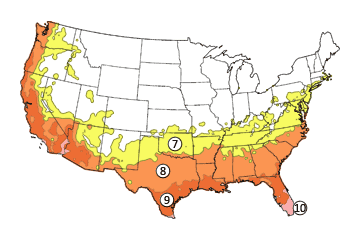
The crapemyrtle (crape myrtle) can be expected to grow in Hardiness Zones 7–10. If you live in the right region, this could be a show-stopping addition to your yard.
Tree Type: This is a flowering shrub, typically planted for its profusion of flowers.
Mature Size: The common crapemyrtle grows to a height of 15–25' and a spread of 6–15' at maturity.
Growth Rate: This shrub grows at a fast rate, with height increases of more than 24" per year.
Sun Preference: Full sun is the ideal condition for this shrub, meaning it should get at least 6 hours of direct, unfiltered sunlight each day.
Soil Preference: The common crapemyrtle grows in a wide range of soils from slightly alkaline to acidic. It prefers moist, well-drained sites but has some drought tolerance.
Wildlife Value: This shrub attracts bees and provides bird habitat.
History/Lore:
The common crapemyrtle is a native of China and Korea. It is called the "lilac of the South." The number of cultivars is enormous. Among these, the U.S. National Arboretum introductions are important for their disease resistance, good flowering, and ornamental bark.
Thanks to his work with crapemyrtle breeding for most of his professional life, Dr. Carl Witcomb -- researcher, author, and professor at the University of Florida and Oklahoma State University for 20 years -- has patented cultivars that are hardy in Zone 6 and even on warmer sites in Zones 4 and 5.
Downvoting a post can decrease pending rewards and make it less visible. Common reasons:
Submit
Crepe Myrtle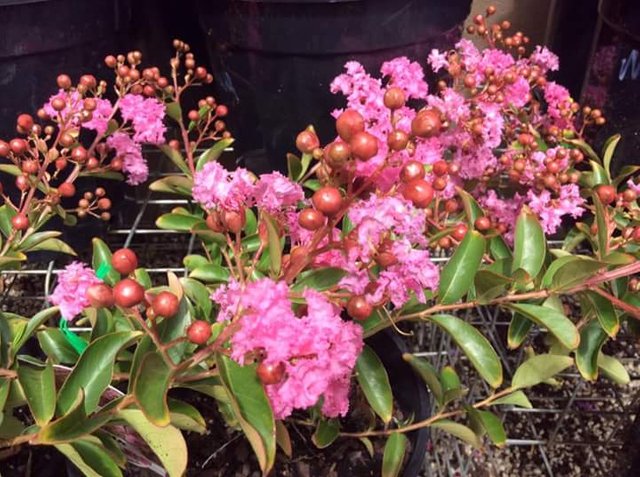 Where to plant Crepe Myrtles
Where to plant Crepe Myrtles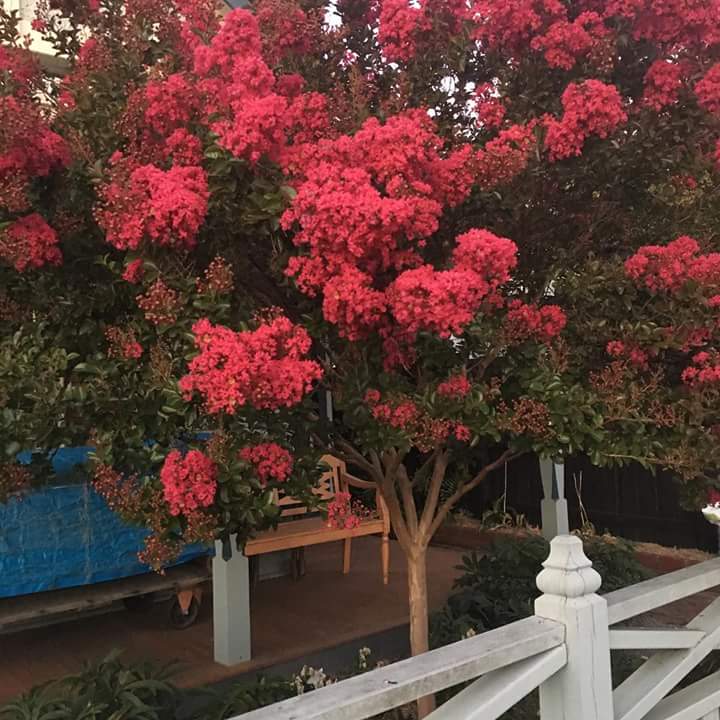 How to Plant Crepe Myrtles
How to Plant Crepe Myrtles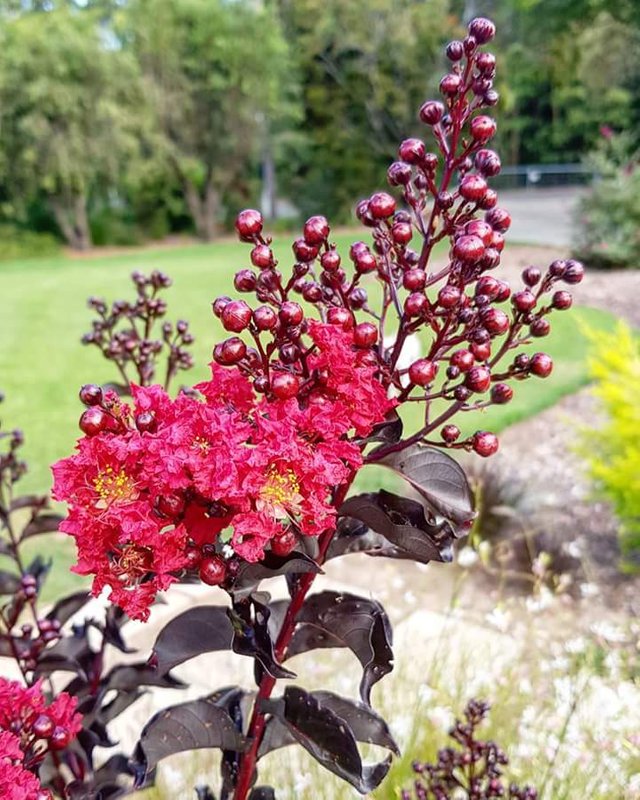 This will help it take up water after planting. Mulch to conserve moisture and keep down weeds. Apply a fertilizer such as Schultz Starter Plus Transplanting Solution or Vigoro Starter Fertilizer as recommended on the label.
This will help it take up water after planting. Mulch to conserve moisture and keep down weeds. Apply a fertilizer such as Schultz Starter Plus Transplanting Solution or Vigoro Starter Fertilizer as recommended on the label. 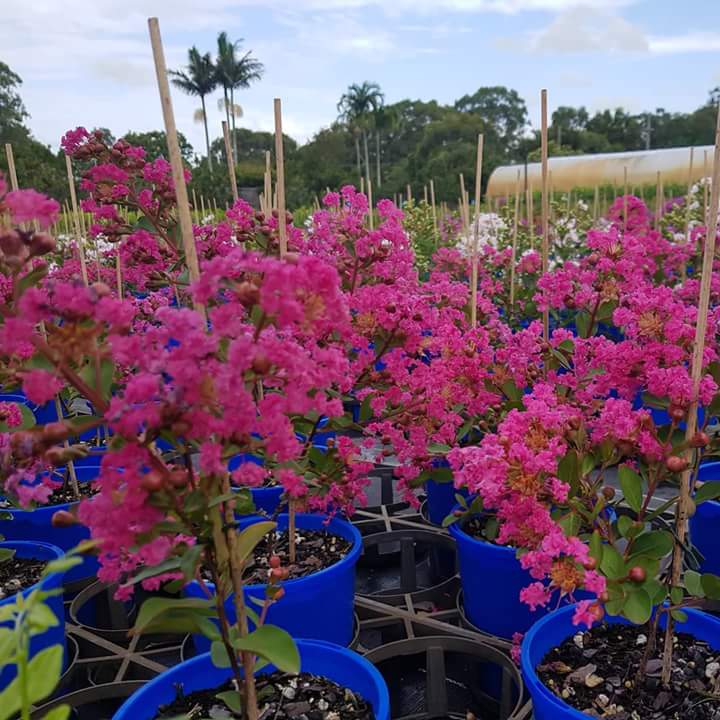 Troubleshooting Common Crepe Myrtle Problems.As soon as crepe myrtle leaves unfurl, look for aphids. Their sugary excretions causes sooty mold. This covers the leaves, making them look black and unattractive; a bad infestation will eventually turn leaves yellow and may hinder blooming.
Troubleshooting Common Crepe Myrtle Problems.As soon as crepe myrtle leaves unfurl, look for aphids. Their sugary excretions causes sooty mold. This covers the leaves, making them look black and unattractive; a bad infestation will eventually turn leaves yellow and may hinder blooming. 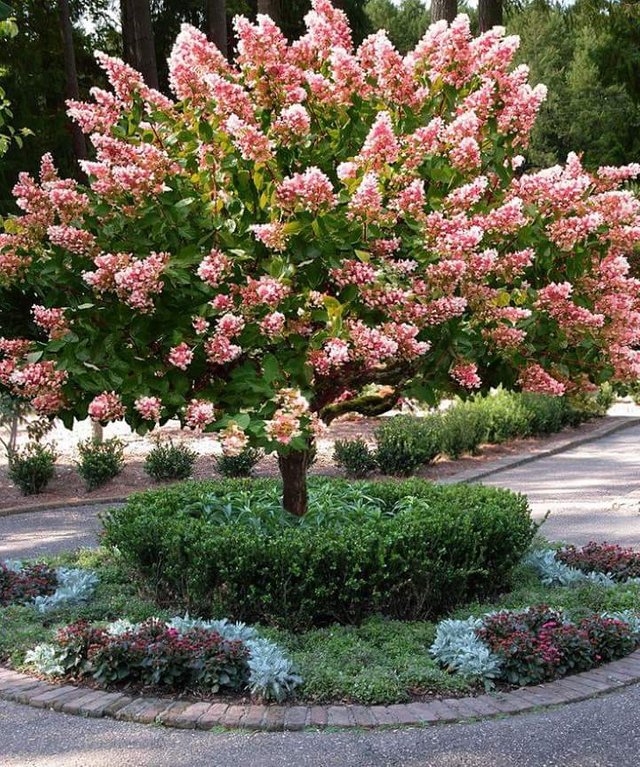 Control these pests by spraying with insecticides that target aphids (such as malathion, diazinon, or ultra-fine horticultural oil) in the summer as soon as they appear. Spray both sides of the foliage thoroughly, and be sure to get the tips of new shoots and flowerbuds. Repeat this treatment as necessary.thanks to sharing for your good post.my dear friend..very well done.. @ctrl-alt-nwo
Control these pests by spraying with insecticides that target aphids (such as malathion, diazinon, or ultra-fine horticultural oil) in the summer as soon as they appear. Spray both sides of the foliage thoroughly, and be sure to get the tips of new shoots and flowerbuds. Repeat this treatment as necessary.thanks to sharing for your good post.my dear friend..very well done.. @ctrl-alt-nwo
Lagerstroemia indica, more commonly known as the Crepe Myrtle, is bursting into bloom all over Melbourne. They are a multi-stemmed deciduous tree which grows well in full-sun.
The bare trunk is a feature in itself, being smooth & having pinkish-grey mottled spots. The summer/autumn flowers come in pink, white, mauve & carmine.
Crepe myrtles have many landscape applications. Planted together, they create a large deciduous fence or screen. A single tree can create a distinctive focus, and the pair framing the front door greets visitors with a warm southern greeting.Be sure to select the right size for your needs. Large types need space for growth without encroaching on buildings, power lines or paths. The average size, which will grow from 12 to 15 feet, is ideal for a small courtyard or garden. The choice of gnomes looks great in large containers, plantations of the basement and even included in perennial beds. In addition, remember that myrtle-like creams love the sun. The volume of flower production is significantly reduced in a light shade, and a full shade can prevent flowering in general...
Late fall to early spring is the best time to plant. But a lot of folks buy and plant their crepe myrtle in summer because they select it while it is blooming. That works too, but watering well during the summer months is crucial to transitioning it into your garden. No matter when you plant, water your crepe myrtle well before putting it in the ground.
Downvoting a post can decrease pending rewards and make it less visible. Common reasons:
Submit
Magoo-2 found a series of multi accounts of a same owner is following your articles to cheat your generous rewards.
Magoo-2 found these accounts are suspicious & can be multi accounts of a single owner. Conclusion is based on last 30 days transactions:
@timuann
@rahulsen
magoo-2
Check our latest multi comment spam update report
Downvoting a post can decrease pending rewards and make it less visible. Common reasons:
Submit
you tell wrong.because It is not good to comment on other people without thinking about it. @magoo-2
Downvoting a post can decrease pending rewards and make it less visible. Common reasons:
Submit
Be sure to select the right size for your needs. Large types need space for growth without encroaching on buildings, power lines or paths. The average size, which will grow from 12 to 15 feet, is ideal for a small courtyard or garden. The choice of gnomes looks great in large containers, plantations of the basement and even included in perennial beds. In addition, remember that myrtle-like creams love the sun. The volume of flower production is significantly reduced in a light shade, and a full shade can prevent flowering in general.
A beautiful plant and the South's love affair with crepe myrtles is undeniable. In some areas, you see them on practically every street--and for good reason. Few plants can match their combination of spectacular summer flowers, colorful autumn foliage, and handsome sculptural trunks. If you're thinking of adding one or more crepe myrtles to your landscape this season, the following tips will help you make a good decision.
Selecting the Right Crepe Myrtle
Seeing a crepe myrtle in its full summer splendor sends some of us running to the garden shop to buy a plant the same color. But don't buy impulsively. Pay attention to the plant's tag. Make sure that it is not only the exact color that you want, but also the right size and look you hope to achieve.
Downvoting a post can decrease pending rewards and make it less visible. Common reasons:
Submit
🙂🙂🙂🙂🙂🙂🙂🙂🙂🙂🙂🙂🙂🙂🙂🙂🙂🙂🙂🙂🙂🙂🙂🙂🙂🙂🙂🙂🙂🙂🙂🙂🙂🙂🙂🙂🙂🙂🙂🙂🙂🙂🙂🙂🙂🙂🙂🙂🙂🙂🙂🙂🙂🙂🙂🙂🙂🙂🙂🙂🙂🙂🙂🙂🙂🙂🙂🙂 Where to plant Crepe Myrtles
Where to plant Crepe Myrtles
My Big desire is Love And Peace in whole world and the flowers also shows both qualities. I am very glad to see that you are Flower Lover and always sharing such a unique shots of different flowers with detail. Impressive articles you have and the heavy comments on your post shows your popularity and love for you. your current article about Crepe Myrtle ( Lagerstroemia) is much impressive. @ctrl-alt-nwo I Appreciate your efforts and my Support with you. Take care and share The Love to all.🙂🙂🙂🙂🙂🙂🙂🙂🙂🙂🙂🙂🙂🙂🙂🙂🙂🙂🙂🙂🙂🙂🙂🙂🙂🙂🙂🙂🙂🙂🙂🙂🙂🙂🙂🙂🙂🙂🙂🙂🙂🙂🙂🙂🙂🙂🙂🙂🙂🙂🙂🙂
Crepe myrtles have many landscape applications. Planted together, they create a large deciduous fence or screen. A single tree can create a distinctive focus, and the pair framing the front door greets visitors with a warm southern greeting.
Be sure to select the right size for your needs. Large types need space for growth without encroaching on buildings, power lines or paths. The average size, which will grow from 12 to 15 feet, is ideal for a small courtyard or garden. The choice of gnomes looks great in large containers, plantations of the basement and even included in perennial beds. In addition, remember that myrtle-like creams love the sun. The volume of flower production is significantly reduced in a light shade, and a full shade can prevent flowering in general.
Downvoting a post can decrease pending rewards and make it less visible. Common reasons:
Submit
Drought tolerant, Crape Myrtle craves the heat, and may bloom with large clusters of delicate flowers. When the hot weather arrives, expect late spring and summer colors to decorate your landscape with shades of red, white, purple and pink. Crape Myrtle Lagerstroemia is just as colorful in the fall as it is in the summer. Fall colors such as golden, orange and red are sure to complement any yard and landscape. This small-to-medium-sized tree looks good even when bare, revealing a handsome outline and smooth, spotted gray to light brown bark that may shed to reveal a pinkish, inner bark. Use landscape lighting to highlight the beautiful multi-trunk structure.
The cold hardy Crape Myrtle prefers full sun, though it tolerates partial shade just fine. A long time favorite plant for use in many landscape styles, Crape Myrtle grows at a slow to moderate rate up to 15-feet high, spreading up to 8 to 12 feet. Moon Valley Nurseries offers mature trees that have been nurtured by our nursery professionals. The plants usually take on a vase shape with shiny, bright green leaves. It is a versatile drought tolerant plant that combines well with other plants in any type of garden, so feel free to plant Crape Myrtle anywhere on your landscape for instant beauty and appeal.
It is easy to see why Crape Myrtle is such a popular plant for dry climates and landscape styles. You can plant this attractive Lagerstroemia plant any time, with annual to occasional maintenance required. Moon Valley Nurseries Crape Myrtle specimens offer mildew resistance and year round beauty - perfect for Southwestern landscapes and sure to be a colorful addition to any garden and landscape design.
https://www.moonvalleynurseries.com/trees/hedge-material/crape-myrtle
Downvoting a post can decrease pending rewards and make it less visible. Common reasons:
Submit
Lagerstroemia 'Cherry Mocha'
Common Name: Crapemyrtle
You’ll be impressed by the refined habit of ‘Cherry Mocha’ in the landscape. The dense, small habit has woody, burgundy-colored stems that bear semi-glossy burgundy foliage. The glossy deep red new growth at the tips really accentuate the attractive dark color of the foliage. In late summer, you’ll be treated to smaller clusters of cherry red flowers that open from shiny red buds. Green seed pods follow the flowering performance.
Crapemyrtle have long been a popular flowering shrub in the south, and it's time that these beautiful flowering shrubs made a splash in the Northern market! The hybridizing team at Walters Gardens, Inc. has worked hard toward selections that perform well in our West Michigan climate. All of the members of this collection bloom on new wood, so you can expect a great flowering performance year after year. Note to southern growers: all measurements are based on plant performance in Michigan. In warmer zones without winter die back, mature height will be taller.
https://www.waltersgardens.com/variety.php?ID=LAGCM
Downvoting a post can decrease pending rewards and make it less visible. Common reasons:
Submit
magoo-2 found a series of multi accounts of a same owner is following your articles to cheat your generous rewards.
magoo-2 found these accounts are suspicious & can be multi accounts of a single owner. Conclusion is based on last 30 days transactions:
@rik432
@ratul8940
@rahul72
@taylor10
@villani
@wilson6
@masud90
@purepinag
@sumonsha
@perry1
@max1994
magoo-2
Check our latest multi comment spam update report
Downvoting a post can decrease pending rewards and make it less visible. Common reasons:
Submit
Lagerstroemia - we call it "Lilac." I really like this shrub. When it blooms with its divine smell. It is widespread in the forests of China, Korea, India, the Philippine Islands, where it is considered a "divine flower" with mystical properties. The bush form has hard light brown shoots. The tree has a thin, strong trunk. They are covered with bark, which easily flakes to long strips.
In height, the larstemia grows to 9 meters. The width of the crown can be up to 8 meters. Its form depends on how it will be formed initially. Designers try to give it a neat appearance, cutting and mowing the young pomelets. The Asian beauty blossoms from June to October, forming small flowers at the ends of the young shoots, 2.5 cm in diameter. They gather in brooms, which in length reach 20 cm. Buds forming on short petioles, resemble dense balls and bloom gradually, beginning with the bottom, the wide part. Thank you for the post.
http://3x5.eu/%D0%B8%D0%BD%D0%B4%D0%B8%D0%B9%D1%81%D0%BA%D0%B8-%D0%BB%D1%8E%D0%BB%D1%8F%D0%BA-%D0%BB%D0%B0%D0%B3%D0%B5%D1%80%D1%81%D1%82%D1%80%D0%B5%D0%BC%D0%B8%D1%8F/
Downvoting a post can decrease pending rewards and make it less visible. Common reasons:
Submit
Crepe Myrtle
At the beginning of the flowering trees I like the most is the tree. This tree, which adds happiness to what it is, loves the sun very much. For this reason, we must plant this tree in the most sunny spot of our garden. Well-drained, moist soil likes but tolerates drought.Crepe Myrtle should be regularly watered, but we must avoid excessive watering. Molding in a humid environment is a problem. We can get past this disease using fungicide.
It is very elegant with white, pink or lilac flowers opening mid-summer. Flowering takes 60-120 days. The spreading area of the wood can be between 4.5 and 7.5 meters.
Crepe Myrtle are curious to give side trunks and branches. However, if desired, it can be pruned to grow on a single body. Excessive pruning can damage the natural image of the tree, so be careful. Pruning must be done at the end of winter or early spring, before the growth. The pruning of dead flower heads gives the opportunity to bloom again in the same season.
Downvoting a post can decrease pending rewards and make it less visible. Common reasons:
Submit
magoo-2 found a series of multi accounts of a same owner is following your articles to cheat your generous rewards.
magoo-2 found these accounts are suspicious & can be multi accounts of a single owner. Conclusion is based on last 30 days transactions:
@justdothat
@harunbaki
@justshowme
@gifhy
@lessismoring
magoo-2
Check our latest multi comment spam update report
Downvoting a post can decrease pending rewards and make it less visible. Common reasons:
Submit
Common Name's:Crape myrtle, Crapemyrtle, Crepe myrtle.

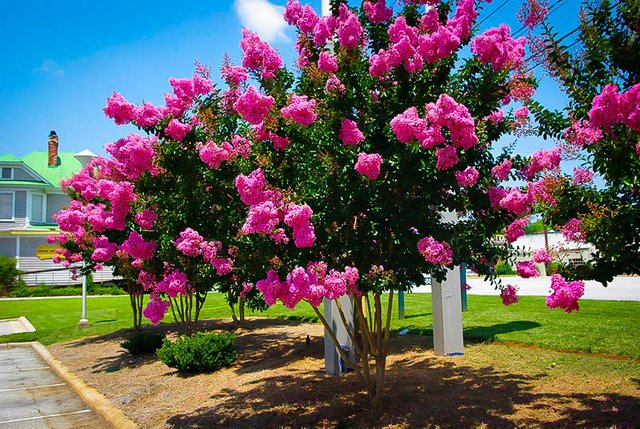

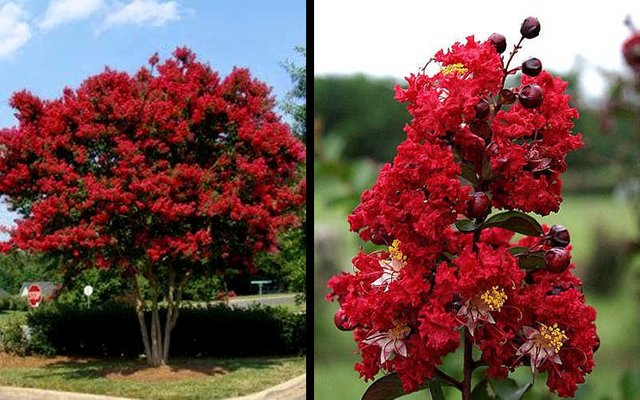

Cultivar(s):Dallas Red (20 ft.) is very cold hardy, Natchez (white, 25 ft.), Muskogee (lavendar), Cherokee (red, 10-12 ft.), Tuscarora (coral pink, 16 ft.), Powhatan (purple, 14-20 ft.)
The draw for this plant is that is blooms at a time when most trees are not blooming. If the plant is healthy it will be covered with blooms that will last for months during the hottest part of the summer. This tree is resistant to damage by deer.
Crepe myrtles will grow in almost any kind of soil sand, loam or clay. It is even possible to grow them in containers if they are watered and fertilized properly.
A lot of work has been done with crepe myrtles to produce several different colors of flowers from white to purple to every shade of red. They can be purchased for small spaces with plants that reach a mature height of 3 to 5 feet to large shade trees reaching heights of 35 feet and almost any size in between.
Work has been done in breeding this original crepe myrtle Lagerstroemia indica with a Japanese crepe myrtle Lagerstroemia faurei, which features red, flaky bark and resistance to powdery mildew. Most new varieties that are on the market today are a result of this breading program.
Source-https://plants.ces.ncsu.edu/plants/all/lagerstroemia-indica/
Downvoting a post can decrease pending rewards and make it less visible. Common reasons:
Submit
Beloved in the South, crape myrtle (Lagerstroemia indica) is a wonderful perennial deciduous shrub or small tree that provides landscape interest year around, requires minimal attention, and doesn't usually suffer from insects or disease. The long-blooming beautiful flowers appear in midsummer and last throughout the fall giving way to a colorful autumn show. As the leaves drop, depending on the variety, the plant displays its interesting exfoliating bark.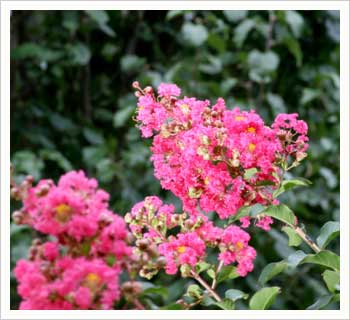
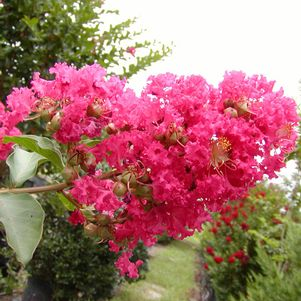
The crape myrtle has been planted in Dixie around homes and along roadways for decades. However, as new varieties have been developed, its range has grown as gardeners have incorporated it into landscapes in more northern climates.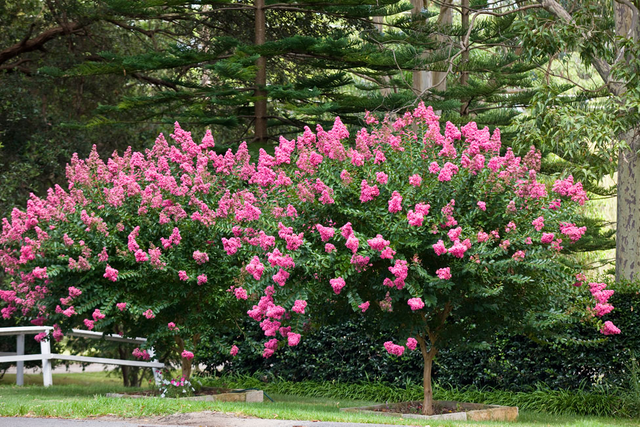
Like many of our best loved plants, the crape myrtle is also a native of Asia. Small plants and cuttings found their way to England and then to the United States during the latter 18th and early 19th centuries.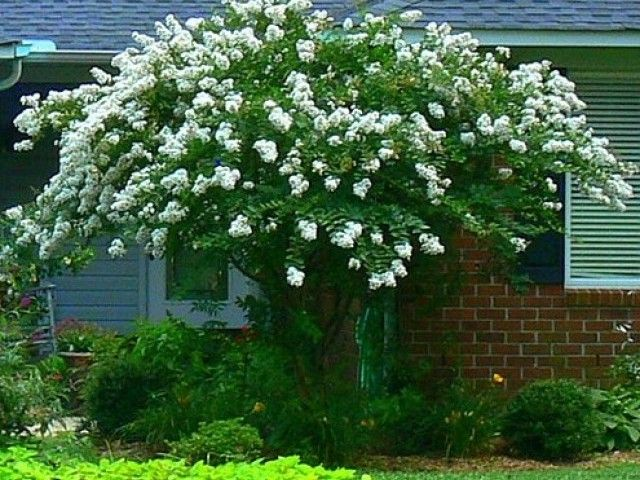
Downvoting a post can decrease pending rewards and make it less visible. Common reasons:
Submit
Crepe Myrtle tree is really one of the most spectecular flowering trees in the world! Feels so relaxing to seeing those beautiful pictures. Thank you for sharing valuable info. 🙂
Downvoting a post can decrease pending rewards and make it less visible. Common reasons:
Submit
Magoo-2 found a series of multi accounts of a same owner is following your articles to cheat your generous rewards.
Magoo-2 found these accounts are suspicious & can be multi accounts of a single owner. Conclusion is based on last 30 days transactions:
@stardivine
@invinciblelight
@lovehaswon
magoo-2
Check our latest multi comment spam update report
Downvoting a post can decrease pending rewards and make it less visible. Common reasons:
Submit
Indian lilac
The best thing about Indian lilac is of course its breathtaking summer bloom. Imagine in your garden a gigantic bouquet covered with generous bunches of flowers in shimmering colors and will renew itself for long weeks! In some varieties, the flowers are so abundant that they make foliage disappear. The most common color is probably the rose in subtle nuances, but you will also find lagerstroemias red, mauve, purple, and even white. At the end of the day, you will see the color become darker. At the heart of the flower, a small bouquet of stamens golden yellow adds a touch of light.
Downvoting a post can decrease pending rewards and make it less visible. Common reasons:
Submit
Magoo-2 found a series of multi accounts of a same owner is following your articles to cheat your generous rewards.
Magoo-2 found these accounts are suspicious & can be multi accounts of a single owner. Conclusion is based on last 30 days transactions:
@redouanemez
@amalmez
magoo-2
Check our latest multi comment spam update report
Downvoting a post can decrease pending rewards and make it less visible. Common reasons:
Submit
Hhhhhhhhhhhh you make me laugh more than ever!
You did a good job of spying, but I advise you to redouble your effots to do well what you want to do as steemit work on "spying". at least if you spend the 30 days looking on my profile you will find that I am a woman my dear @magoo-2.
By the way, i downvoted you, for the harm you are trying to create for me and for Sir @redouanemez.
So stop what you are looking for.
Downvoting a post can decrease pending rewards and make it less visible. Common reasons:
Submit
Crepe myrtle trees are lovely, delicate trees offering bright, spectacular flowers in the summer and beautiful fall color when the weather begins to chill. But are crepe myrtle roots invasive enough to cause problems? You don’t have to worry about this issue because crepe myrtle tree roots are not invasive....
![IMG_20180430_190002.png]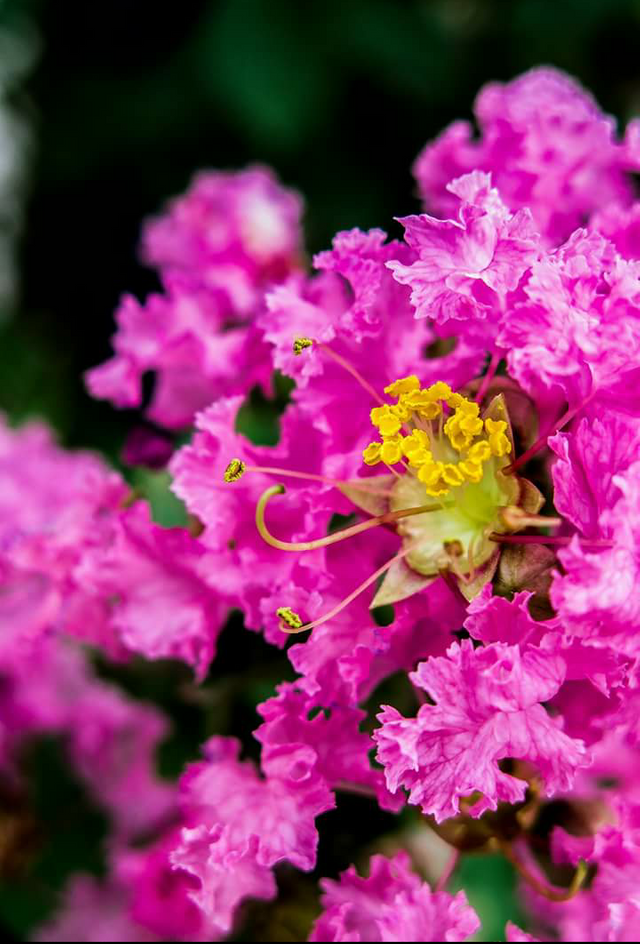 )
)
(
Are Crepe Myrtle Roots Invasive!!
The crepe myrtle is a small tree, rarely growing taller than 30 feet. Beloved by gardeners for its luxurious summer blossoms in shades of pink and white, the tree also offers exfoliating bark and an autumn foliage display. If you are thinking about planting one in the garden, don’t worry about the invasiveness of crepe myrtles and their roots. The crepe myrtle root system will not harm your foundation. The crepe myrtle root system can extend a considerable distance but the roots are not aggressive. The roots are relatively weak and will not insert themselves into nearby foundations, sidewalks or endanger nearly plants. Crepe myrtle roots do not sink taproots deep into the ground or send lateral roots out to crack anything in their path. In fact, the entire crepe myrtle root system is shallow and fibrous, spreading out horizontally up to three times as far as the canopy is wide. .
On the other hand, it is wise to keep all trees at least 5 to 10 feet away from walkways and foundations. The crepe myrtle is no exception. In addition, the root system grows so close to the surface of the soil that you shouldn’t plant flowers in the area below the tree. Even grass might compete with the shallow crepe myrtle roots for water.... Some experts list crepe myrtles as potentially invasive plants, but the invasiveness of crepe myrtle has nothing to do with the crepe myrtle tree roots. Rather, the tree reproduces so readily from its seeds that, once the seeds escape cultivation, the resulting trees can crowd out native plants in the wild.
Since most of the popular crepe myrtle cultivars are hybrid and do not produce seeds, reproduction by seeds in the wild is not a problem. This means that you do not risk introducing an invasive species by planting a crepe myrtle in the backyard. .
Your post is always the best. Thank you for sharing this wonderful post again with us✌
Downvoting a post can decrease pending rewards and make it less visible. Common reasons:
Submit
Magoo-2 found a series of multi accounts of a same owner is following your articles to cheat your generous rewards.
Magoo-2 found these accounts are suspicious & can be multi accounts of a single owner. Conclusion is based on last 30 days transactions:
@timuann
@rahulsen
magoo-2
Check our latest multi comment spam update report
Downvoting a post can decrease pending rewards and make it less visible. Common reasons:
Submit
You are wrong. It is not good to comment on other people without thinking about it.
Downvoting a post can decrease pending rewards and make it less visible. Common reasons:
Submit
A very beautiful flower tree @ ctrl-alt-nwo, I have never seen that flower from before. Could it be, in the country I live not going to grow Crepe Myrtle flowers. Because I have never seen Crepe Myrtle flowers before. Or maybe I just have not seen the flower, according to my view, the flower has a very expensive price. But I really like the flowers, I have some flowers that I plant in my house. But the flowers that I plant this, all the usual flowers and low prices, and to treat it not difficult, just need us flush it in the afternoon and morning.
In my opinion, the flowers have many benefits for us, because the flowers are able to make our home atmosphere becomes beautiful and much more. It's one of the flowers I plant in my house. And that became the most interest I liked, of all the flowers I have. Thanks for sharing, and hope you have a wonderful day... :)
Downvoting a post can decrease pending rewards and make it less visible. Common reasons:
Submit
Magoo-2 found a series of multi accounts of a same owner is following your articles to cheat your generous rewards.
Magoo-2 found these accounts are suspicious & can be multi accounts of a single owner. Conclusion is based on last 30 days transactions:
@mukhlis89
@morales
@reynakarina
magoo-2
Check our latest multi comment spam update report
Downvoting a post can decrease pending rewards and make it less visible. Common reasons:
Submit
Crepe myrtles are colorful and long-lasting flowers which occur in summer. These are some amazing photographs.
Downvoting a post can decrease pending rewards and make it less visible. Common reasons:
Submit
Crape Myrtles in Western Oregon
rape myrtles (Lagerstroemia) offer the powerful triple allure of brilliant flowers (late in the season), beautiful bark, and vivid fall color. Long grown in western Oregon, they are enjoying a surge of discovery among gardeners. Often thought of as trees and shrubs for hotter climates, a wide range of cultivars have proven their adaptability in our milder summers, and others are waiting to be discovered by gardeners.
In 1974, Ted Van Veen, owner of Van Veen Rhododendron Nursery in southeastern Portland, learned of the crape myrtle breeding program at the United States National Arboretum in Washington, DC. Intrigued by the prospect of new hybrids with superior cold hardiness and greater disease resistance than the Lagerstroemia indica selections then available, Van Veen hoped to test them in Portland, at what he then perceived was their limit of cold hardiness.
In the following year, he received five new crape myrtles, unnamed and identified only by cultivar numbers, from the National Arboretum. He planted three at the front of his nursery and donated the other two to the Crystal Springs Rhododendron Garden nearby. The three trees at the nursery are still thriving and have grown into magnificent specimens, a testament to their adaptability and long-term performance in our climate.
Two of those numbered cultivars were later named (‘Muskogee’ and ‘Natchez’) and released by the National Arboretum—the first crape myrtle hybrids from their breeding program. Since that time, they have become two of the most popular and widely planted crape myrtles in the United States, and are now planted around the world. The third tree is the pure species Lagerstroemia fauriei.
https://www.pacifichorticulture.org/articles/crape-myrtles-in-western-oregon/
Downvoting a post can decrease pending rewards and make it less visible. Common reasons:
Submit
magoo-2 found a series of multi accounts of a same owner is following your articles to cheat your generous rewards.
magoo-2 found these accounts are suspicious & can be multi accounts of a single owner. Conclusion is based on last 30 days transactions:
@rik432
@ratul8940
@rahul72
@taylor10
@villani
@wilson6
@masud90
@purepinag
@sumonsha
@perry1
@max1994
magoo-2
Check our latest multi comment spam update report
Downvoting a post can decrease pending rewards and make it less visible. Common reasons:
Submit
very great post about lagerstroemia here's a photo
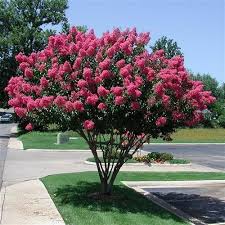

lagerstroemia generally known as crape myrtle or crepe myrtle, is a family of around 50 types of deciduous and evergreen trees and bushes local to the Indian subcontinent, southeast Asia, northern Australia, and parts of Oceania, developed in hotter atmospheres around the globe. It is an individual from the family Lythraceae, which are otherwise called the loosestrife family.
Downvoting a post can decrease pending rewards and make it less visible. Common reasons:
Submit
Magoo-2 found a series of multi accounts of a same owner is following your articles to cheat your generous rewards.
Magoo-2 found these accounts are suspicious & can be multi accounts of a single owner. Conclusion is based on last 30 days transactions:
@abdt
@wolf-kinght
@sardar-sani
@tuseef-akram
magoo-2
Check our latest multi comment spam update report
Downvoting a post can decrease pending rewards and make it less visible. Common reasons:
Submit
Crepe Myrtle And Health
In addition to beautiful, Crepe Myrtle flowers are very good for health. Shrub or small tree, two to three meters tall. These plants can be found growing wild on the cliffs and edge of the forest, or planted as an ornamental plant.
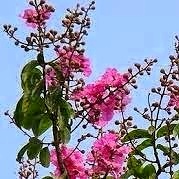
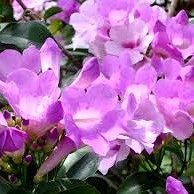
The branches are single-leaved, short-stemmed, elliptical or elongated, blunt ends, base of wedge, flat edges with lengths of two to seven cm. Width about three cm, dark green color.
Compound inflorescence, a long panicle of ten to fifty centimeters. Grows gathered at the end of the stem or out of the leaf's armpits, red, white or purple, with the edges of the wavy crowns.
The fruit is rather round, length nine to twelve mm. Width of eight to eleven mm.
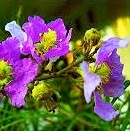
The parts used for health are flowers, roots, leaves and bark.
Crepe Myrtle flowers can be used to stimulate circulation, stop bleeding, anti-inflammatory, urine peluruh and neutralize toxins in the body.
In addition, treat hepatitis, stomach and leg swelling, dysentery, vaginal discharge, abdominal pain after childbirth, toothache.
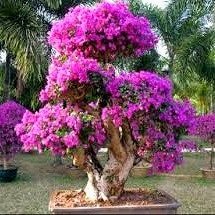
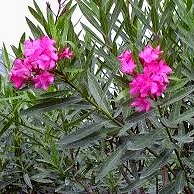
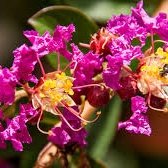
As for how to use it:
To drink: 15-30 gr, boiled, drunk
External use: Boiled, water to wash the affected parts or dry material is ground into powder, to be sown to the diseased parts of the body such as broken bones, ulcers, ulcers, abscesses, eczema, inflammation of the breast.
How to use :
Coughing up blood, vomiting blood, dysentation: 30 gr boiled roots with 200cc of clean water until the remaining 80cc. Taken 2x a day, every time drink 40 cc
Thank you!
May be useful!
Downvoting a post can decrease pending rewards and make it less visible. Common reasons:
Submit
Magoo-2 found a series of multi accounts of a same owner is following your articles to cheat your generous rewards.
Magoo-2 found these accounts are suspicious & can be multi accounts of a single owner. Conclusion is based on last 30 days transactions:
@seha76
@faisalrizal2018
@roman-sabil
magoo-2
Check our latest multi comment spam update report
Downvoting a post can decrease pending rewards and make it less visible. Common reasons:
Submit
The crepe myrtles are among the most satisfactory of plants for the South: showy summer flowers, attractive bark, and (in many cases) brilliant fall color make them year-round garden performers. Long, cool autumns yield the best leaf display; sudden frosts following warm, humid fall weather often freeze leaves while they’re still green, ruining the show.
Most crepe myrtles in gardens are selections of L. indica or hybrids of that species with L. fauriei. The latter species has attracted much notice for its hardiness and exceptionally showy bark. Queen’s crepe myrtle, L. speciosa, grows only in the Tropical South.
Downvoting a post can decrease pending rewards and make it less visible. Common reasons:
Submit
Beautiful crepe myrtle man...👌 here are some crepe myrtles...
!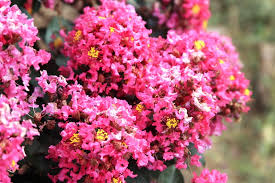.jpeg)
Downvoting a post can decrease pending rewards and make it less visible. Common reasons:
Submit
Crepe Myrtle red Crepe Myrtle is a very beautiful flower thankyou for share
Downvoting a post can decrease pending rewards and make it less visible. Common reasons:
Submit
Magoo-2 found a series of multi accounts of a same owner is following your articles to cheat your generous rewards.
Magoo-2 found these accounts are suspicious & can be multi accounts of a single owner. Conclusion is based on last 30 days transactions:
@mumin007
@naqshab02
@muhasib
@sheikhiqra
@hariszahoor
@zahidmalik
@chaddiman
magoo-2
Check our latest multi comment spam update report
Downvoting a post can decrease pending rewards and make it less visible. Common reasons:
Submit
I like the lagerstroemia Lavender Dwarf above all because of the theme of being a dwarf lol, it can be easily used for a Bonsai. The only thing is that I live in South America and the fungus would be a very serious problem.
But it is a very beautiful tree in the floral period.
This little friend reminded me of a tree here in Venezuela called Apamate (Tabebuia rosea) I remember that by the middle of March they tend to bloom.
In addition to its beauty when it flowers, the leaves are often used as an antipyretic and the bark is used for diabetes, malaria and other things.

Downvoting a post can decrease pending rewards and make it less visible. Common reasons:
Submit
Magoo-2 found a series of multi accounts of a same owner is following your articles to cheat your generous rewards.
Magoo-2 found these accounts are suspicious & can be multi accounts of a single owner. Conclusion is based on last 30 days transactions:
@bearmaster
@orinoco
@broadcast
@alejandromata
@santiagolaw
@bodzila
@cabbage-dealer
@msp-reg
@thantunaung
magoo-2
Check our latest multi comment spam update report
Downvoting a post can decrease pending rewards and make it less visible. Common reasons:
Submit
Lagerstroemia

Lagerstroemia /ˌleɪɡərˈstriːmiə/,[1] commonly known as crape myrtle or crepe myrtle, is a genus of around 50 species of deciduous and evergreen trees and shrubs native to the Indian subcontinent, southeast Asia, northern Australia, and parts of Oceania, cultivated in warmer climates around the world. It is a member of the family Lythraceae, which are also known as the loosestrife family. The genus is named after the Swedish merchant Magnus von Lagerström, a director of the Swedish East India Company who supplied Carl Linnaeus with plants he collected. These flowering trees are beautifully colored and are often planted both privately and commercially as ornamentals.
Description
Crepe myrtles are chiefly known for their colorful and long-lasting flowers which occur in summer. Most species of Lagerstroemia have sinewy, fluted stems and branches with a mottled appearance that arises from having bark that sheds throughout the year. The leaves are opposite and simple, with entire margins, and vary from 5–20 cm (2–8 in). While all species are woody in nature, they can range in height from over 30 m (100 ft) to under 30 cm (1 ft); most, however, are small to medium multiple-trunked trees and shrubs. The leaves of temperate species provide autumn color.
Flowers are borne in summer and autumn in panicles of crinkled flowers with a crepe-like texture. Colors vary from deep purple to red to white, with almost every shade in between. Although no blue-flowered varieties exist, the flowers trend toward the blue end of the spectrum with no orange or yellow except in stamens and pistils. The fruit is a capsule, green and succulent at first, then ripening to dark brown or black dryness. It splits along six or seven lines, producing teeth much like those of the calyx, and releases numerous, small, winged seeds.
In their respective climates, both subtropical and tropical species are common in domestic and commercial landscapes. The timber of some species has been used to manufacture bridges, furniture, and railway sleepers,[2] but in Vietnam's Cat Tien National Park, the dominant stands of Lagerstroemia calyculata in secondary forest are thought to have survived (after episodes of logging) due to the low quality of wood.[3] Lagerstroemia species are used as food plants by the larvae of some Lepidoptera (moth and butterfly) species including Endoclita malabaricus.
The leaves of L. parviflora are fed on by the Antheraea paphia moth which produces the tassar silk, a form of wild silk of commercial importance in India.
https://en.wikipedia.org/wiki/Lagerstroemia
Downvoting a post can decrease pending rewards and make it less visible. Common reasons:
Submit
magoo-2 found a series of multi accounts of a same owner is following your articles to cheat your generous rewards.
magoo-2 found these accounts are suspicious & can be multi accounts of a single owner. Conclusion is based on last 30 days transactions:
@rik432
@ratul8940
@rahul72
@taylor10
@villani
@wilson6
@masud90
@purepinag
@sumonsha
@perry1
@max1994
magoo-2
Check our latest multi comment spam update report
Downvoting a post can decrease pending rewards and make it less visible. Common reasons:
Submit
200 words maximum please.
Downvoting a post can decrease pending rewards and make it less visible. Common reasons:
Submit
The crepe myrtles are among the most satisfactory of plants for the South: showy summer flowers, attractive bark, and (in many cases) brilliant fall color make them year-round garden performers. Long, cool autumns yield the best leaf display; sudden frosts following warm, humid fall weather often freeze leaves while they’re still green, ruining the show.
Downvoting a post can decrease pending rewards and make it less visible. Common reasons:
Submit
crepe myrtle really looking awesome. you explain about it so nicely. thanks for share dear
source:
Downvoting a post can decrease pending rewards and make it less visible. Common reasons:
Submit
commonly known as crape myrtle or crepe myrtle, is a genus of around 50 species of deciduous and evergreen trees and shrubs native to the Indian subcontinent, southeast Asia, northern Australia, and parts of Oceania, cultivated in warmer climates around the world. It is a member of the family Lythraceae, which are also known as the loosestrife family. The genus is named after the Swedish merchant Magnus von Lagerström, a director of the Swedish East India Company who supplied Carl Linnaeus with plants he collected. These flowering trees are beautifully colored and are often planted both privately and commercially as ornamentals.

Crepe myrtles are chiefly known for their colorful and long-lasting flowers which occur in summer. Most species of Lagerstroemia have sinewy, fluted stems and branches with a mottled appearance that arises from having bark that sheds throughout the year. The leaves are opposite and simple, with entire margins, and vary from 5–20 cm (2–8 in). While all species are woody in nature, they can range in height from over 30 m (100 ft) to under 30 cm (1 ft); most, however, are small to medium multiple-trunked trees and shrubs. The leaves of temperate species provide autumn color.
Downvoting a post can decrease pending rewards and make it less visible. Common reasons:
Submit
Downvoting a post can decrease pending rewards and make it less visible. Common reasons:
Submit
upvote and resteem done
Downvoting a post can decrease pending rewards and make it less visible. Common reasons:
Submit
Magoo-2 found a series of multi accounts of a same owner is following your articles to cheat your generous rewards.
Magoo-2 found these accounts are suspicious & can be multi accounts of a single owner. Conclusion is based on last 30 days transactions:
@mdnazmulhasan
@mdnazmul
@litonmiha
@applo
@rockstar20
magoo-2
Check our latest multi comment spam update report
Downvoting a post can decrease pending rewards and make it less visible. Common reasons:
Submit
My Big desire is Love And Peace in whole world and the flowers also shows both qualities. I am very glad to see that you are Flower Lover and always sharing such a unique shots of different flowers with detail. Impressive articles you have and the heavy comments on your post shows your popularity and love for you. your current article about Crepe Myrtle ( Lagerstroemia) is much impressive. @ctrl-alt-nwo I Appreciate your efforts and my Support with you. Take care and share The Love to all.
"Crepe Myrtle Tree ( Lagerstroemia)"
Source
Downvoting a post can decrease pending rewards and make it less visible. Common reasons:
Submit
Magoo-2 found a series of multi accounts of a same owner is following your articles to cheat your generous rewards.
Magoo-2 found these accounts are suspicious & can be multi accounts of a single owner. Conclusion is based on last 30 days transactions:
@rabeel
@salmanbukhari54
magoo-2
Check our latest multi comment spam update report
Downvoting a post can decrease pending rewards and make it less visible. Common reasons:
Submit
I dont agree with you. I have really only 1 account which i am using. The other account is my brother's acc which he himself using. So kindly do a correction.Thanks.
Downvoting a post can decrease pending rewards and make it less visible. Common reasons:
Submit
Crape myrtles bloom on new growth, so prune them in early spring before they break dormancy. Although some gardeners prune their crape myrtles in the fall, I do not recommend doing this. Fall pruning not only creates an unattractive look for winter but also removes the current year’s growth as a buffer against any potential winter damage. Good pruning while crape myrtles are young will mean less maintenance when the trees are older.
For most crape myrtles, choose three, five, or—at most—seven main trunks. An odd number of trunks is more pleasing to the eye than an even number, which often looks like soldiers in formation. Keep trunks that have ample space to grow and are growing straight and strong. Prune suckers and any additional trunks as close to the soil line as possible. This will avoid leaving a dead stub, which is unsightly and a potential entry for insects and diseases.
source: http://www.finegardening.com/article/pruning-crape-myrtles
Downvoting a post can decrease pending rewards and make it less visible. Common reasons:
Submit
🙂🙂🙂🙂🙂🙂🙂🙂🙂🙂🙂🙂🙂🙂🙂🙂🙂🙂🙂🙂🙂🙂🙂🙂🙂🙂🙂🙂🙂
A beautiful plant and the South's love affair with crepe myrtles is undeniable. In some areas, you see them on practically every street--and for good reason. Few plants can match their combination of spectacular summer flowers, colorful autumn foliage, and handsome sculptural trunks. If you're thinking of adding one or more crepe myrtles to your landscape this season, the following tips will help you make a good decision.🙂🙂🙂🙂🙂🙂🙂🙂🙂🙂🙂🙂🙂🙂🙂🙂🙂🙂🙂🙂🙂🙂🙂🙂🙂🙂🙂🙂
Troubleshooting Common Crepe Myrtle Problems
As soon as crepe myrtle leaves unfurl, look for aphids. Their sugary excretions causes sooty mold. This covers the leaves, making them look black and unattractive; a bad infestation will eventually turn leaves yellow and may hinder blooming.
Control these pests by spraying with insecticides that target aphids (such as malathion, diazinon, or ultra-fine horticultural oil) in the summer as soon as they appear. Spray both sides of the foliage thoroughly, and be sure to get the tips of new shoots and flowerbuds. Repeat this treatment as necessary.
A white powdery fungus called powdery mildew sometimes attacks the leaves of many older selections of crepe myrtles. Although the disease may keep the trees from blooming when it becomes severe, most trees aren't permanently damaged.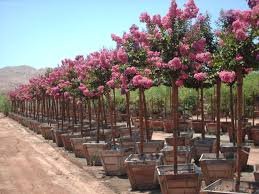
🙂🙂🙂🙂🙂🙂🙂🙂🙂🙂🙂🙂🙂🙂🙂🙂🙂🙂🙂🙂
🙂🙂🙂🙂🙂🙂🙂🙂🙂🙂🙂🙂🙂🙂🙂🙂🙂🙂🙂🙂
Downvoting a post can decrease pending rewards and make it less visible. Common reasons:
Submit
Its homeland is South China and South Asia. In fact, Lagerstroemia is a tree, an ornamental tree. Despite its Latin name, Lagerstroemia indica is located in a natural range that includes parts of China, Korea, and Japan, especially East Asia.
It can not bloom in shaded areas.
It is from the beginning of July to the flower.
It is widespread in much of Southern Europe and in the south of America; here, the different flowers in colors ranging from dark red to bogey dominate the general plans and private gardens in most of the summer months. In addition to the flamboyant flowers, the plants are very popular with their unusual shells in various shades of brown and silvery gray.
This feature allows plants of Lagerstroemia indica to grow into a fairly thick bush or even a fairly thick bodied tree and branches into medium-sized trees in plants grown in areas where there are no hard or long-term frosts. However, the plant can be grown as a molded bush in very cold regions. In this case, although many bodies with the characteristic shell appear to be unlikely, magnificent flowers make this plant worthwhile. The flowers are lined up on young shoots in clusters. With its smooth, shiny brownish-pink color, it looks even in the flowerless seasons. That's why the four seasons decorate the garden. This bush has a summer mood dependency because it needs heat to mature. For this reason, if the plant receives more summer temperatures, it gets more colder during the cooler months than it can usually tolerate.
Downvoting a post can decrease pending rewards and make it less visible. Common reasons:
Submit
Magoo-2 found a series of multi accounts of a same owner is following your articles to cheat your generous rewards.
Magoo-2 found these accounts are suspicious & can be multi accounts of a single owner. Conclusion is based on last 30 days transactions:
@justdothat
@harunbaki
@justshowme
@gifhy
@lessismoring
magoo-2
Check our latest multi comment spam update report
Downvoting a post can decrease pending rewards and make it less visible. Common reasons:
Submit
wow awesome crepe myrtles..... they look so beautiful and stunning they have so many colours and from dwarf weeping bush size and bigger.... they look lovely when they lose their leaves... thanks for sharing sir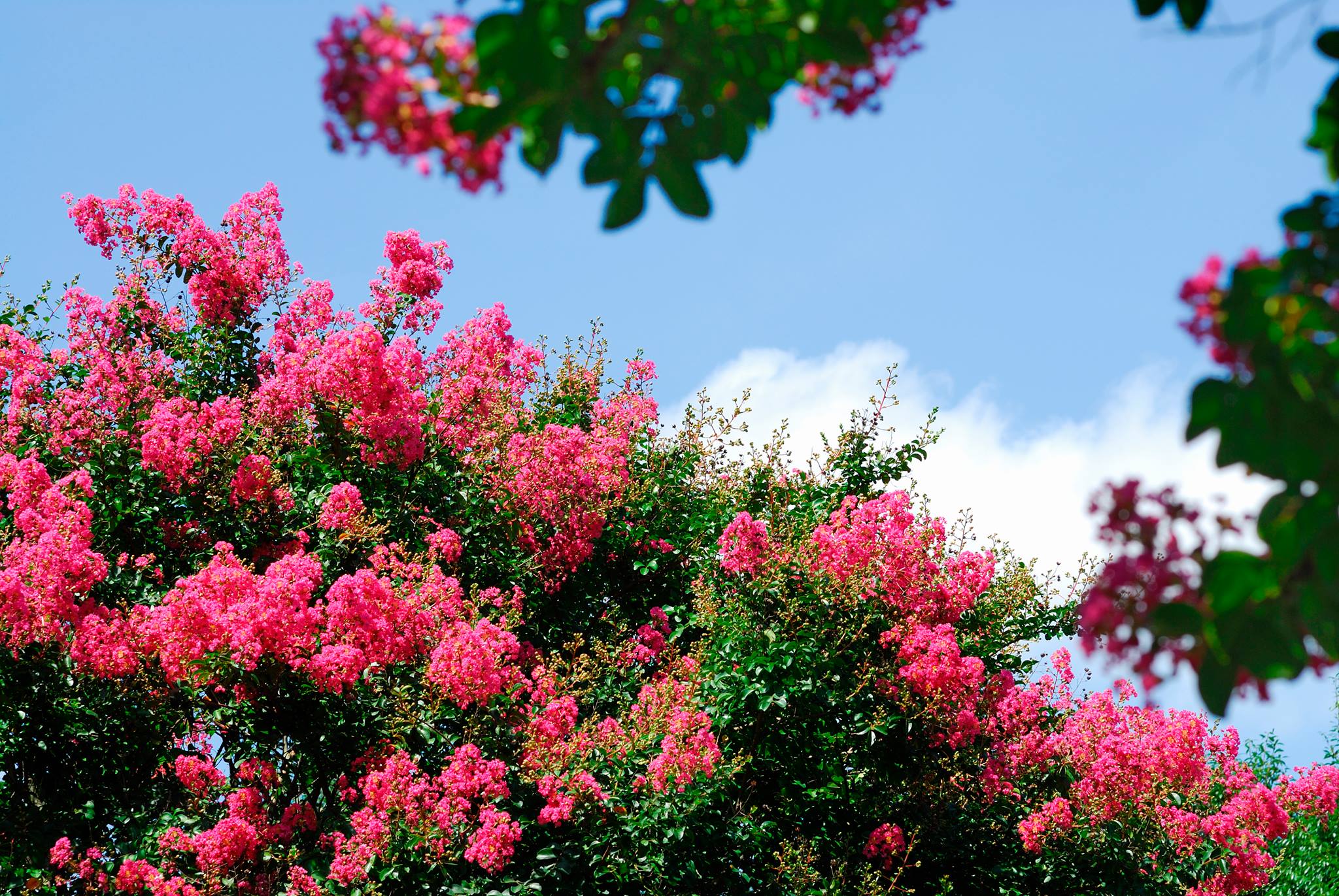
Downvoting a post can decrease pending rewards and make it less visible. Common reasons:
Submit
Oh yeah @ctrl-alt-nwo, Crape Myrtles (Lagerstroemia indica), often referred to as the “lilacs of the South”, are among the favorites of the South due to their showy flowers, colorful autumn foliage, and, in many cases, their attractive bark.
Choose the best place in the landscape for your new crape myrtle. Consider the ultimate size of the tree and note if there might eventually be problems with overhead wires, poles, structures or other desirable trees or shrubs. Perfect Plants’ Black Diamond Series of crape myrtles get only 10-12 feet tall and spread just 8 feet across, but some of the older cultivars (such as ‘Natchez’, ‘Red Rocket’ and ‘Tuscarora’) get considerably larger. Crape myrtles do best in full sun – the sunnier the spot, the better, but they should get at least 6 hours of sun each day. Crape myrtles bloom poorly in partial sun and may not bloom at all in a mostly shady location. Crape myrtles like a soil that is relatively moist but still well drained. Once established, however, they do well in dry, sandy soils. Crape myrtles do not tolerate soils that stay waterlogged for extended periods.
When planting your new tree, thoroughly water the soil in the plant’s pot before starting. Dig a hole larger than the pot, twice as wide if possible. Place the pot on its side and slide the plant out. If the plant is stuck, you can slip a long-bladed knife around the inside edge to loosen it. Gently loosen some of the roots along the sides and bottom, and pull them outward so they are not encircling the root mass. It shouldn’t be necessary to prune any of the roots.The exception is large root(s) wound around the circumference of the pot. In this case the offending root should be shortened so that when it is in the ground it will grow outward and not continue growing in a circle.
Once established (after a year of growth), crape myrtles can tolerate dry spells and should not need any supplemental watering in climates that average at least 20 inches of rain per year (which is all of the eastern US and much of the West). Crape myrtles benefit from an annual application of fertilizer, such as Nutricote Total Controlled Release Type 360 Fertilizer 18-6-8. Follow label directions and don’t over-fertilize, as this can result in excessive leaf growth, production of unsightly suckers and fewer flowers.
Pruning: Some varieties of crape myrtle tend to produce suckers, slender fast growing shoots, at the base of the tree. If your desire is for a standard tree shape, the suckers should be pruned off as they appear. Otherwise, the crape may take on the shape of a bushy shrub. Crape myrtles bloom on their new growth each year, so any pruning of the main tree (as opposed to removing basal suckers) should be done during late winter when the tree is not growing. If you cut off new growth in spring, you cut off developing flowers. If you prune in autumn, the tree could begin new vigorous growth that will then be susceptible to freezing which could kill the tree. When it comes to pruning crape myrtles, there are two distinctly different schools of thought:
Some like to cut them back all the way to a few of the largest limbs, leaving just a stubby skeleton. When growth resumes, these trees sprout numerous shoots from each stub and develop a rounded, lollipop-like shape that is covered in flowers. Crapes pruned this way are good for borders and hedges where uniform a height is desired. However, this “crape murder”, as some call it, results in thin, arching stems and destroys the architectural beauty that characterizes a free-growing crape myrtle.
Most gardeners prefer to allow their crapes to grow into a more natural form, and very little pruning is ever needed. Limbs that cross and branches that are too long or too crowded can be pruned out to maintain a desirable shape. Cut the unwanted branch back to a branch that has at least 1/3, but preferably 1/2 or more, the diameter of the one you are cutting. This is called a thinning cut. If you merely lop off a branch anywhere (a heading cut), the plant will respond with numerous weak and unsightly shoots just below the cut. Pruning all the way back to a branch at least 1/3 the diameter allows the remaining branch to grow normally.
https://myperfectplants.com/grow-guides/crape-myrtle-grow-guide/
Downvoting a post can decrease pending rewards and make it less visible. Common reasons:
Submit
200 words maximum please.
Downvoting a post can decrease pending rewards and make it less visible. Common reasons:
Submit
A magnificent shrub.
One of the most beautiful ornamental bushes - the lagrestreemia - owes its name to the names of the Swedish merchant Magnus von Lagerstrem, a friend of the famous scientist Karl Linnaeus. Traveling in Southeast Asia in 1747, he drew attention to plants with magnificent inflorescences. Taking with him a few dozen seedlings, on the way home he gave them to influential people whom he met in the Mediterranean port cities. Later the plant was brought to the British Isles and the North American continent. The peak of popularity and the real recognition of ornamental camprethmia occurred in 1924 and 2002, when she became the winner of garden exhibiti.Thank you for message .
http://dekorativnye.ru/lagerstremiya-indijskaya.html
Downvoting a post can decrease pending rewards and make it less visible. Common reasons:
Submit
Gardening is one of the most interesting hobbies. One’s spare time can be spent and enjoyed by gardening. It may be done in a small or big garden, and also on the terrace of a house in a small way. Flowers and fruits are generally grown in a garden But If sufficient space is available, vegetables may also be grown.
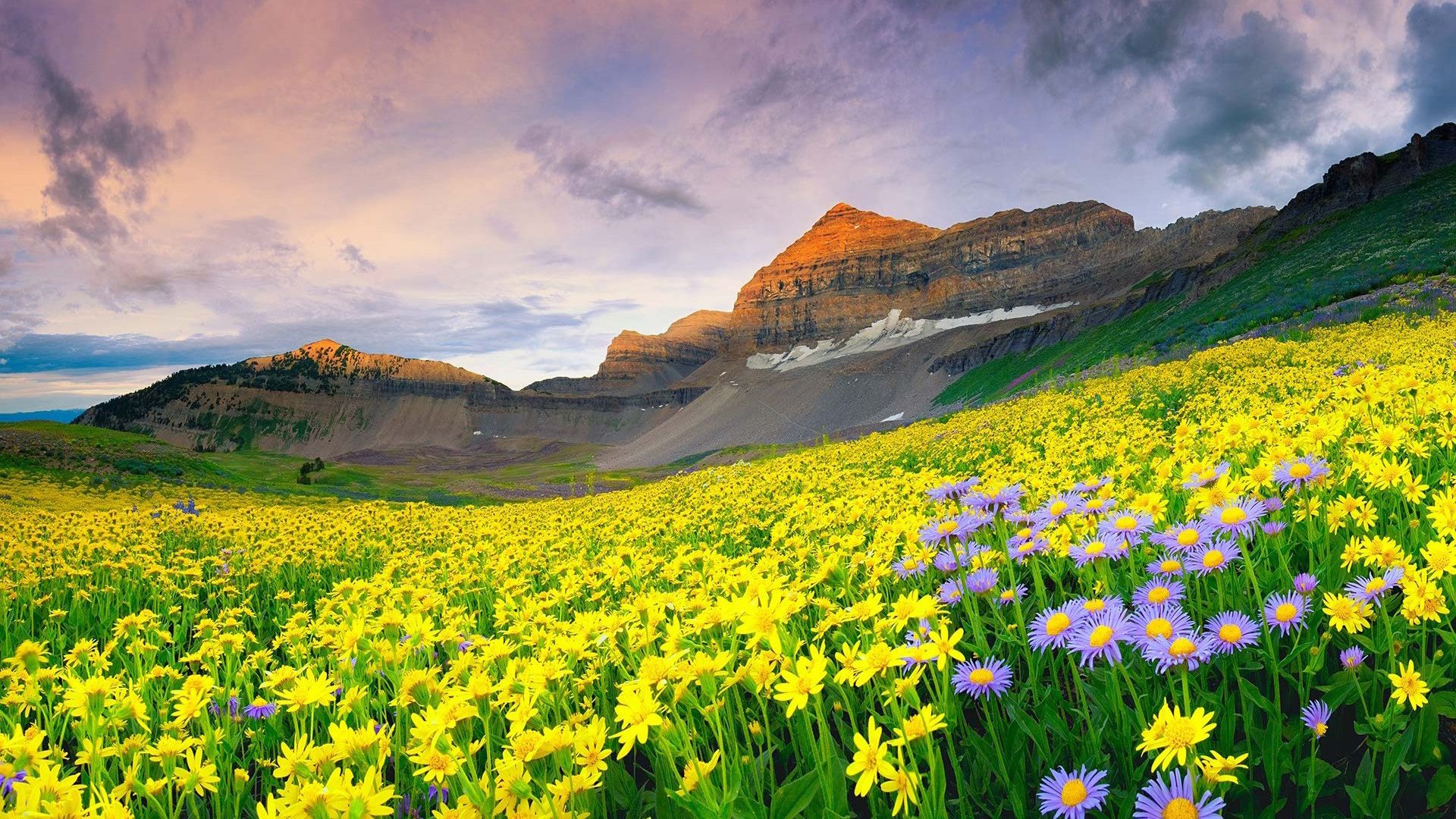
Gardening provides pleasure and profit to one Who does it. Gardening is one such activity that allows us to spend some time in the lap of nature and learn intersting facts about plants. Many children take up gardening as a hobby during their summer and winter vacations.............
Downvoting a post can decrease pending rewards and make it less visible. Common reasons:
Submit
Crepe myrtles do something that few other blossoming trees do – they bloom in high summer. Native to southern and eastern Asia, they grow well in most parts of Australia, producing fabulous crepe-like flower heads in shades of pink, red, mauve, purple and white, through January and February. They also have lots to offer through the other seasons of the year, with brilliant foliage colour in autumn and attractive smooth bark when they’re leafless in winter, which creates an elegant silhouette in the garden landscape.
Crepe myrtles make ideal feature trees for home gardens, because they’re compact in size, and respond well to pruning. There are also dwarf forms available, which are more shrub-like in habit, and are suitable for growing in large tubs. In recent years, the Indian Summer range of crepe myrtles has been released, offering a fabulous range of brilliant colours and excellent resistance to powdery mildew disease, which can effect some of the older varieties during humid summer weather.
Each cultivar in the Indian Summer range is named after an Indian tribe, and the trees range is size from a compact 3 metres, up to about 6 metres in height. All crepe myrtles need to be grown in an open sunny position, and young trees should be watered generously through summer. Because of their compact size, they make very good street trees.
Source: here
Downvoting a post can decrease pending rewards and make it less visible. Common reasons:
Submit
Lagerstroemia: commonly known as crape myrtle or crepe myrtle, is a genus of around 50 species of deciduous and evergreen trees and shrubs native to the Indian subcontinent, southeast Asia, northern Australia, and parts of Oceania, cultivated in warmer climates around the world.which are also known as the loosestrife family.




The genus is named after the Swedish merchant Magnus von Lagerström, a director of the Swedish East India Company who supplied Carl Linnaeus with plants he collected.
Different species of crepe myrtle can be as little as 30 cm (1 foot) in height and can be as tall as 30 m (100 feet).
The colour of crepe myrtle flowers come in almost any shade of purple, pink, red or white.
Crepe myrtles are popular due to their long lasting flowers, which bloom in Summer and Autumn.
Lagerstroemia species are used as food plants by the larvae of some Lepidoptera (moth and butterfly) species including Endoclita malabaricus.The leaves of L. parviflora are fed on by the Antheraea paphia moth which produces the tassar silk, a form of wild silk of commercial importance in India.Tassar silk is a very famous cloth in this part of the world.
Info-http://tenrandomfacts.com/crepe-myrtle/
https://www.google.com/search?q=High+quality+picture+of+Crepe+Myrtle&client=firefox-b-ab&tbm=isch&tbo=u&source=univ&sa=X&ved=0ahUKEwiSrIKGuuTaAhUMRo8KHQfsBQIQsAQIJA&biw=1536&bih=700#imgrc=_
https://en.wikipedia.org/wiki/Lagerstroemia
Downvoting a post can decrease pending rewards and make it less visible. Common reasons:
Submit
I haven’t seen these flowers before!! But I should!
Thank you very much.
You have given me a lot of homework for next weekend at the flower market!!
Downvoting a post can decrease pending rewards and make it less visible. Common reasons:
Submit
This is great article and wonderful photography.
@ctrl-alt-nwo
Upvote Resteem
Downvoting a post can decrease pending rewards and make it less visible. Common reasons:
Submit
That is pretty and that is also like a white tree
Downvoting a post can decrease pending rewards and make it less visible. Common reasons:
Submit
some photo work for you..i think you like this @ctrl-alt-nwo
Downvoting a post can decrease pending rewards and make it less visible. Common reasons:
Submit
Very nice, thanks. But where are the Crepe Myrtles?
Downvoting a post can decrease pending rewards and make it less visible. Common reasons:
Submit
Sorry for some mistake....... @ctrl-alt-nwo
Downvoting a post can decrease pending rewards and make it less visible. Common reasons:
Submit
@ctrl-alt-nwo,
This plant is new to me! Actually I like the color range of these plants! It's amazing and so beautiful!
Cheers~
Downvoting a post can decrease pending rewards and make it less visible. Common reasons:
Submit
@ctrl-alt-nwo - Sir Crepe Myrtle ( Lagerstroemia), I saw before, but today I heard the name... Nice photography too Sir...
+W+
Downvoting a post can decrease pending rewards and make it less visible. Common reasons:
Submit
So beautiful garden, thanks for sharing



Resteem
Downvoting a post can decrease pending rewards and make it less visible. Common reasons:
Submit
That is a amazing trees and really beautiful flowers. the beat garden.
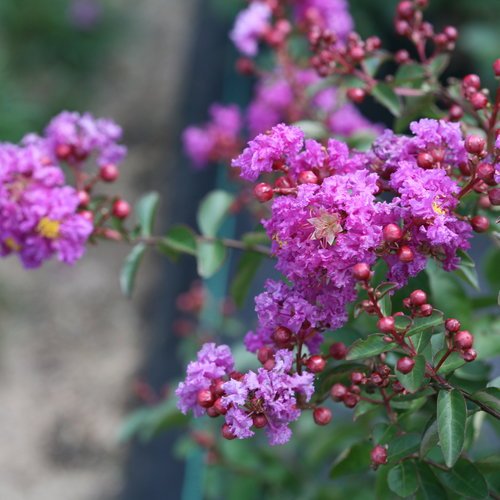
Thanks for the information.
@ctrl-alt-nwo
100% like and resteem
Downvoting a post can decrease pending rewards and make it less visible. Common reasons:
Submit
Wow amazing & beautiful Vinca flowers garden.
For your post propagation.
Upvote/Resteem
Downvoting a post can decrease pending rewards and make it less visible. Common reasons:
Submit
I had a very long trip, I was very busy, now I have time to visit your blog. Your image is different from the old days. It's a cool flower full of life. Previously, I just saw the farm dry and lack of water hahhaa @ctrl-alt-nwo
 Me and flowers ;D
Me and flowers ;D




I hope you still remember my avatar and name. Hahhaaahahh
My grandparents plant a lot of roses and orchids. My grandparents have invested about $ 15,000 to grow flowers.hope you like this ^^ my grandfather has a lot of flowers, but i just post some roses that i like
I have never seen your flowers and people comment below your posts. I want to share the photos that I like
Downvoting a post can decrease pending rewards and make it less visible. Common reasons:
Submit
Of course i remember you. Thanks for the photos of Roses and Dahlias.
Downvoting a post can decrease pending rewards and make it less visible. Common reasons:
Submit
This is really information of Australia flowers garden. that is helpfully and fantastic.
@ctrl-alt-nwo
Your post is great
((((( Resteem)))))
Downvoting a post can decrease pending rewards and make it less visible. Common reasons:
Submit
With all these benefits, they're also really beautiful.
So they are pretty good from the aesthetic point of view as well.
Downvoting a post can decrease pending rewards and make it less visible. Common reasons:
Submit
It is a flower with a very beautiful view
The growth method is not difficult
A very special article made you a really successful person
Downvoting a post can decrease pending rewards and make it less visible. Common reasons:
Submit
Magoo-2 found a series of multi accounts of a same owner is following your articles to cheat your generous rewards.
Magoo-2 found these accounts are suspicious & can be multi accounts of a single owner. Conclusion is based on last 30 days transactions:
@abed894
@roselover
magoo-2
Check our latest multi comment spam update report
Downvoting a post can decrease pending rewards and make it less visible. Common reasons:
Submit
Wow this is beautiful.
I love the fact that it comes in variety of colors; love the one with light pink more.
Crepe Myrtle will make my list of flowers 🌸 to be planted in my yard when I finally get a house of my own
Downvoting a post can decrease pending rewards and make it less visible. Common reasons:
Submit
Magoo-2 found a series of multi accounts of a same owner is following your articles to cheat your generous rewards.
Magoo-2 found these accounts are suspicious & can be multi accounts of a single owner. Conclusion is based on last 30 days transactions:
@princeso
@jacobite
@kevwealth
@mopelola
@bosscharlze
@destinysaid
@oguns
magoo-2
Check our latest multi comment spam update report
Downvoting a post can decrease pending rewards and make it less visible. Common reasons:
Submit
What's the meaning of this nonsense.
Those accounts belongs to their respective owners.
Fix this shitty Bot ease you get into trouble.
Downvoting a post can decrease pending rewards and make it less visible. Common reasons:
Submit
be careful what you report on steemit. these accounts belongs to their owners
Downvoting a post can decrease pending rewards and make it less visible. Common reasons:
Submit
Downvoting a post can decrease pending rewards and make it less visible. Common reasons:
Submit
Magoo-2 found a series of multi accounts of a same owner is following your articles to cheat your generous rewards.
Magoo-2 found these accounts are suspicious & can be multi accounts of a single owner. Conclusion is based on last 30 days transactions:
@triptybarsha
@rakib786
@sujonkhan
@sujonmia
magoo-2
Check our latest multi comment spam update report
Downvoting a post can decrease pending rewards and make it less visible. Common reasons:
Submit
It is a very very common plant in India and is also available in my locality and i can say its a moderate plant yet beautiful when flower comes up.
Thank you.
Downvoting a post can decrease pending rewards and make it less visible. Common reasons:
Submit
i like roses check it out some picture i hope you enjoy it
Downvoting a post can decrease pending rewards and make it less visible. Common reasons:
Submit
what a photography!!!!!!!!!!!!!!plants are so cute,,,specially flower is the symbol of love and purity which is so mind blowing,,,thanks for sharing,,@ctrl-alt-nwo
@upvoted
Downvoting a post can decrease pending rewards and make it less visible. Common reasons:
Submit
Magoo-2 found a series of multi accounts of a same owner is following your articles to cheat your generous rewards.
Magoo-2 found these accounts are suspicious & can be multi accounts of a single owner. Conclusion is based on last 30 days transactions:
@amulla505
@nishuxr
@jzsarkar
magoo-2
Check our latest multi comment spam update report
Downvoting a post can decrease pending rewards and make it less visible. Common reasons:
Submit
hahahah...LOL!!!!
i was just bought 2 SBD from a steemholder @amulla505,,,check it out carefully,,
you just spam ,,,hhahaha,,,prove also have,,,
https://www.facebook.com/profile.php?id=100008324957501
Downvoting a post can decrease pending rewards and make it less visible. Common reasons:
Submit
wow very nice lagerstroemia @ctrl-alt-nwo
Your post very helpful. I like it this post. Your post is attracting me. Hope you will be with this way. Thank you .
Downvoting a post can decrease pending rewards and make it less visible. Common reasons:
Submit